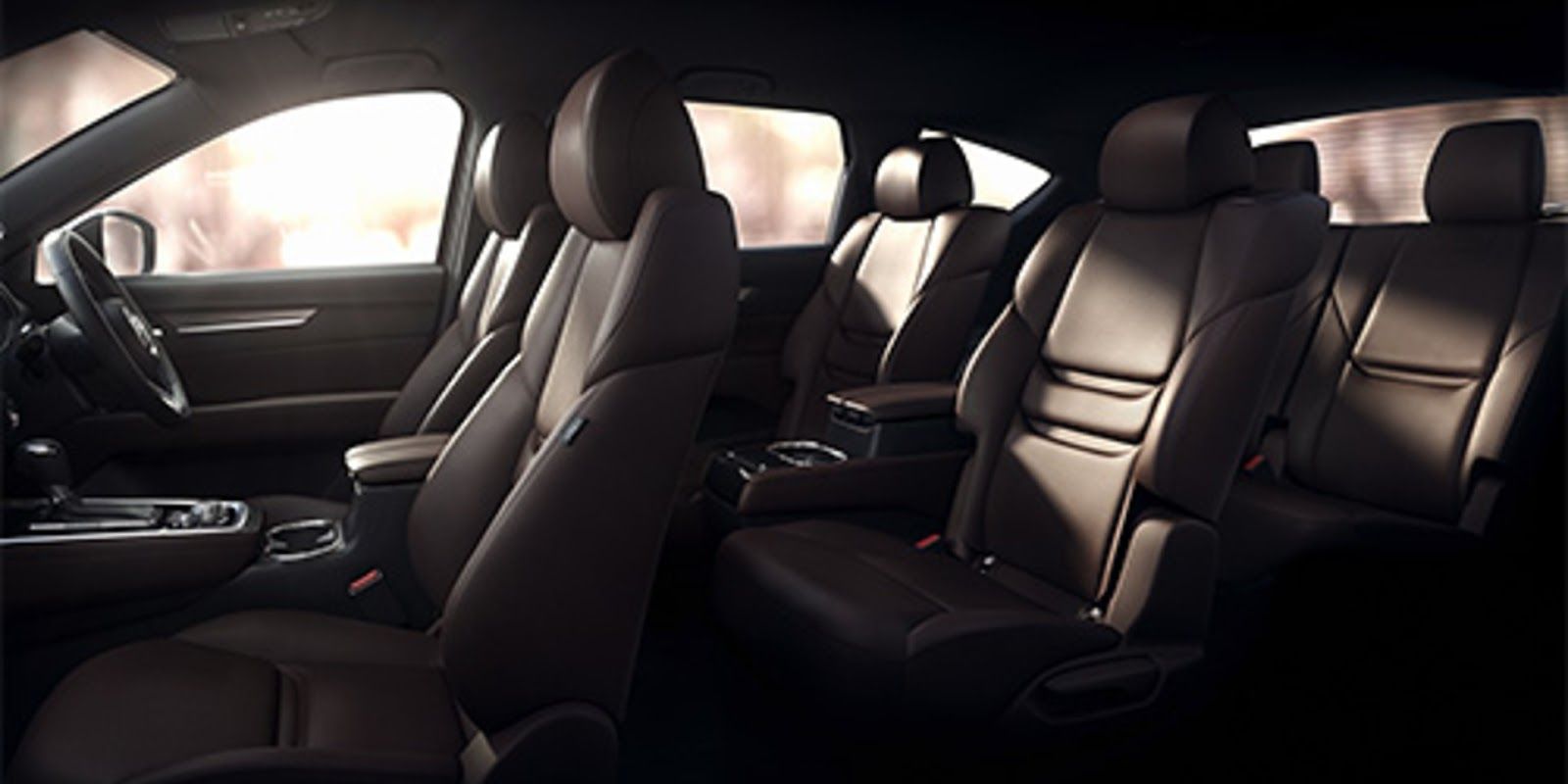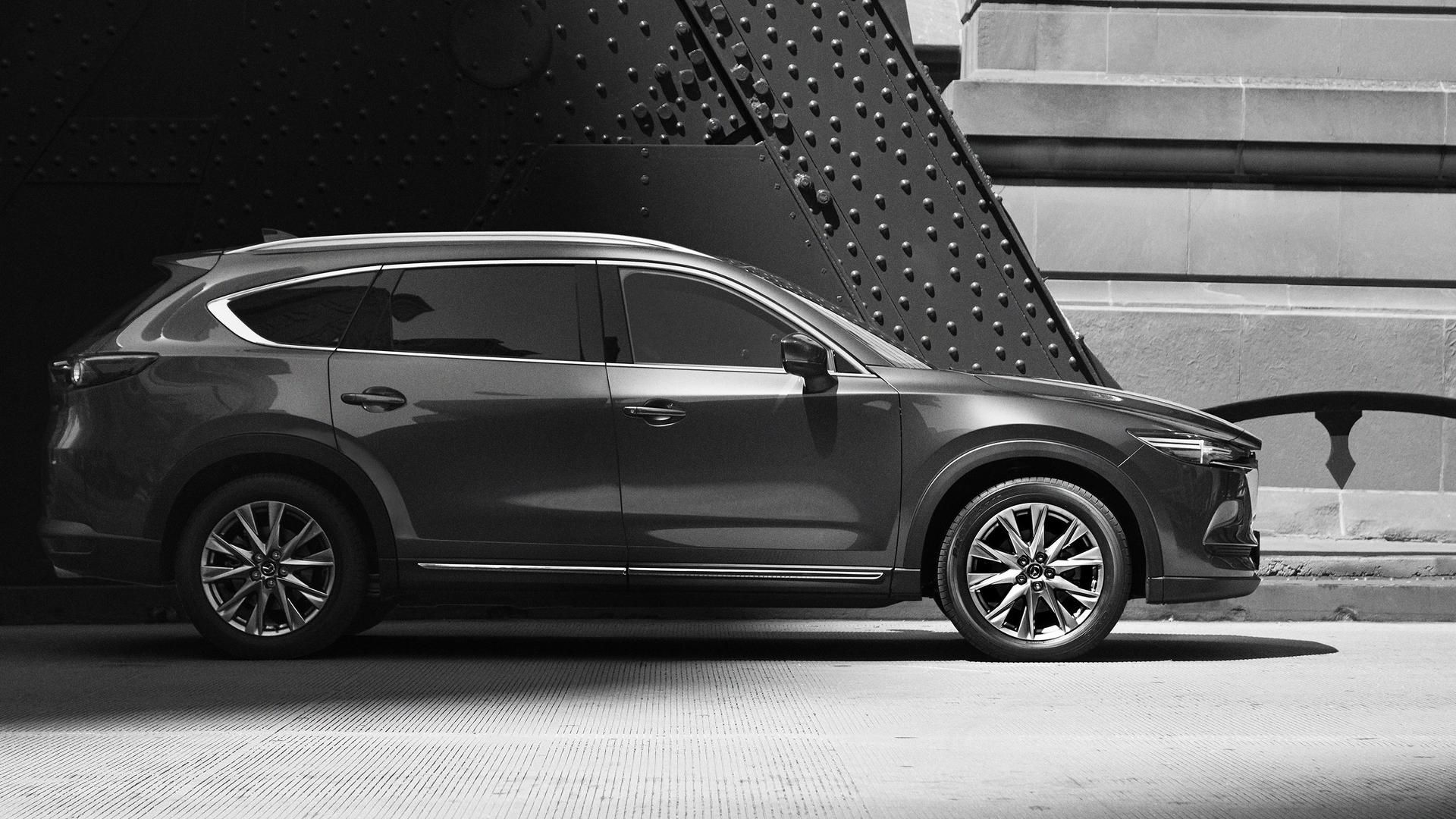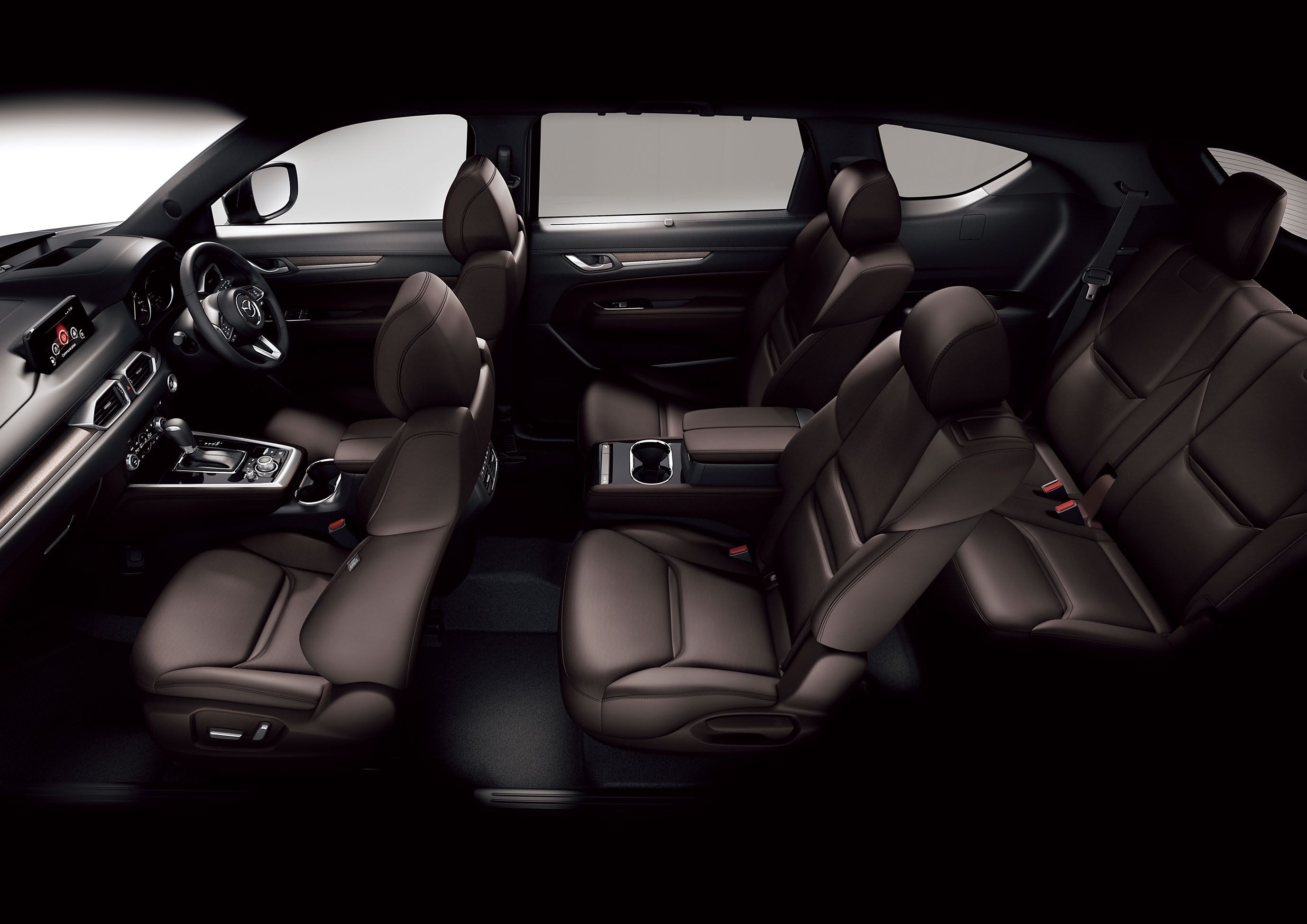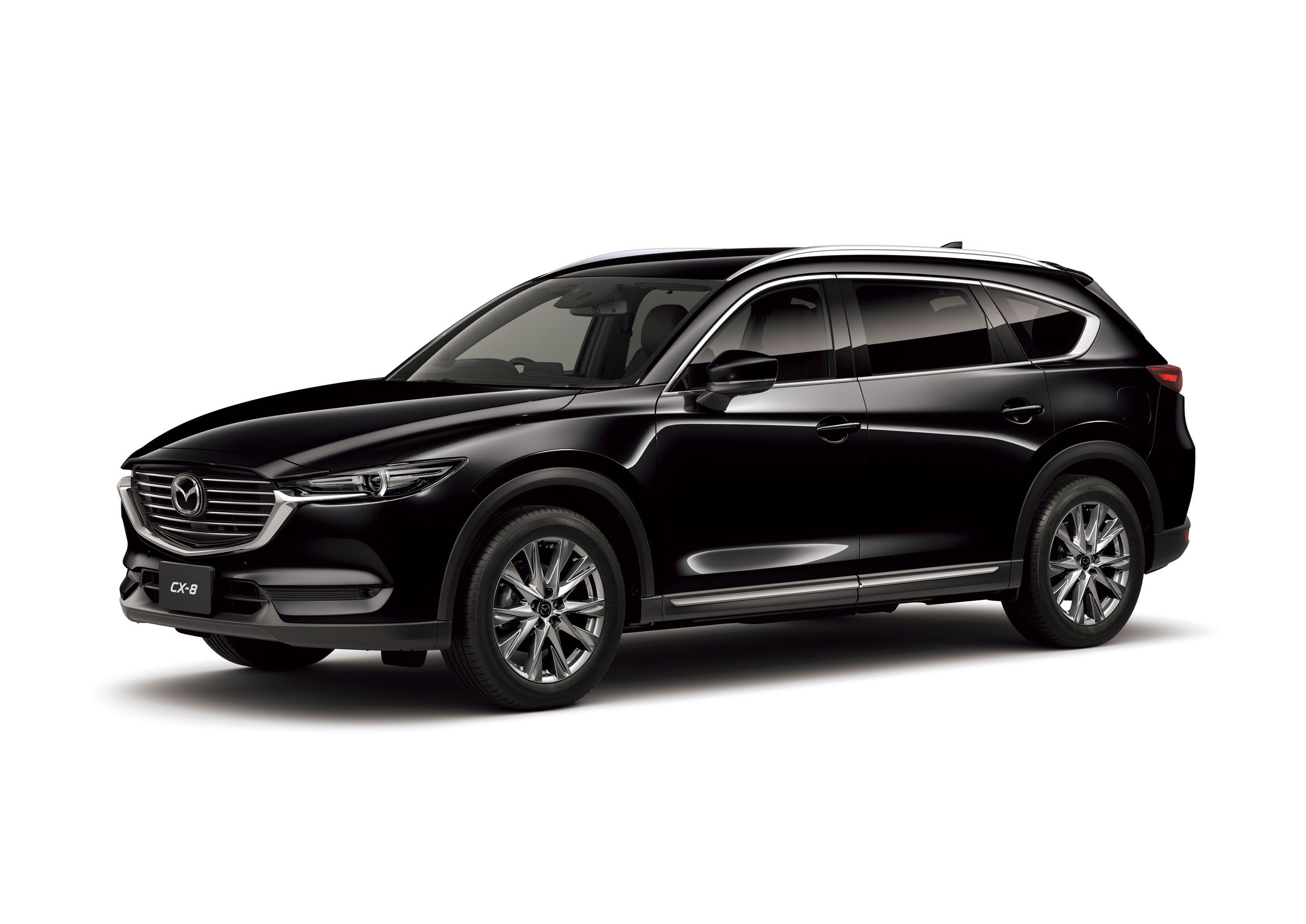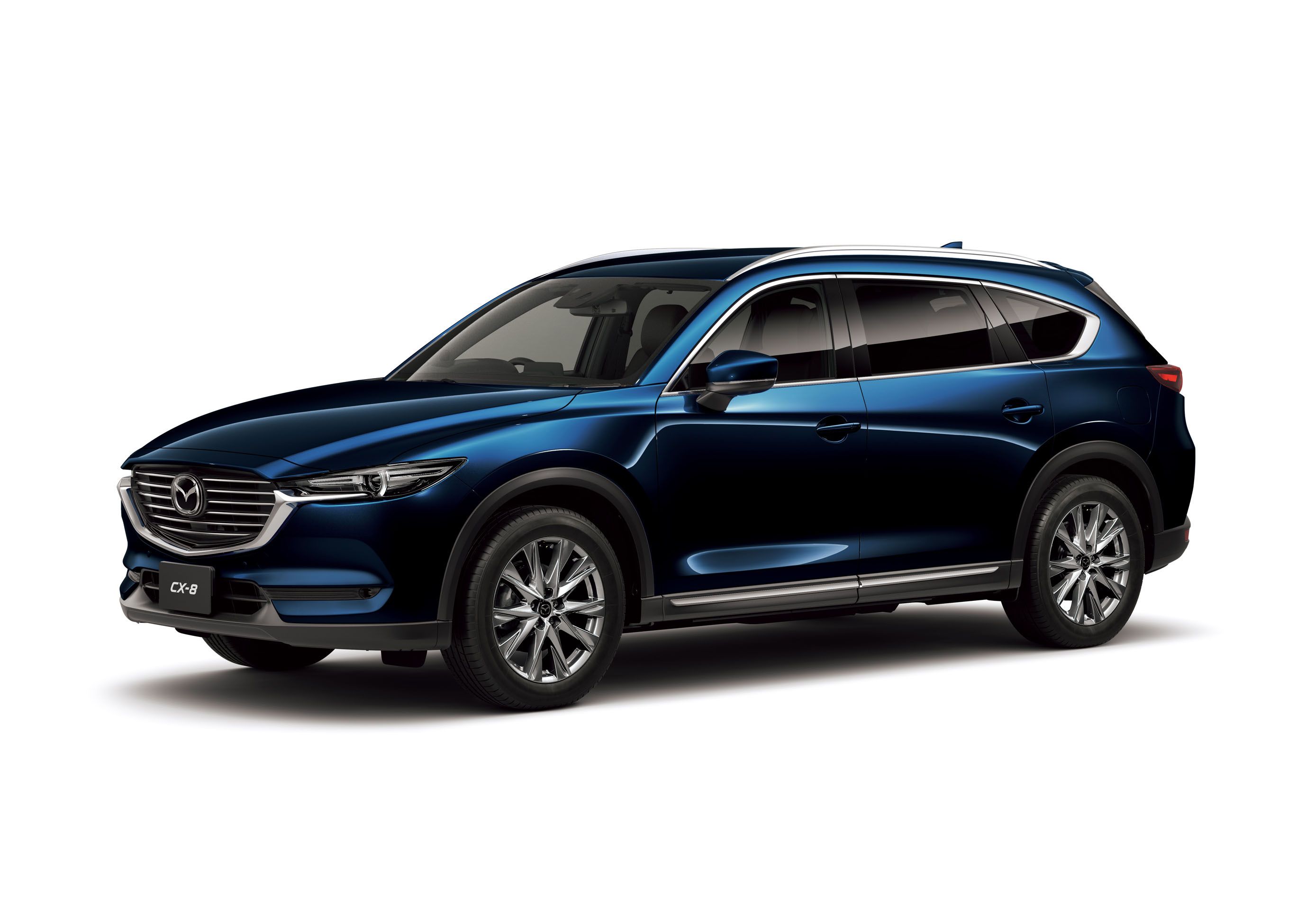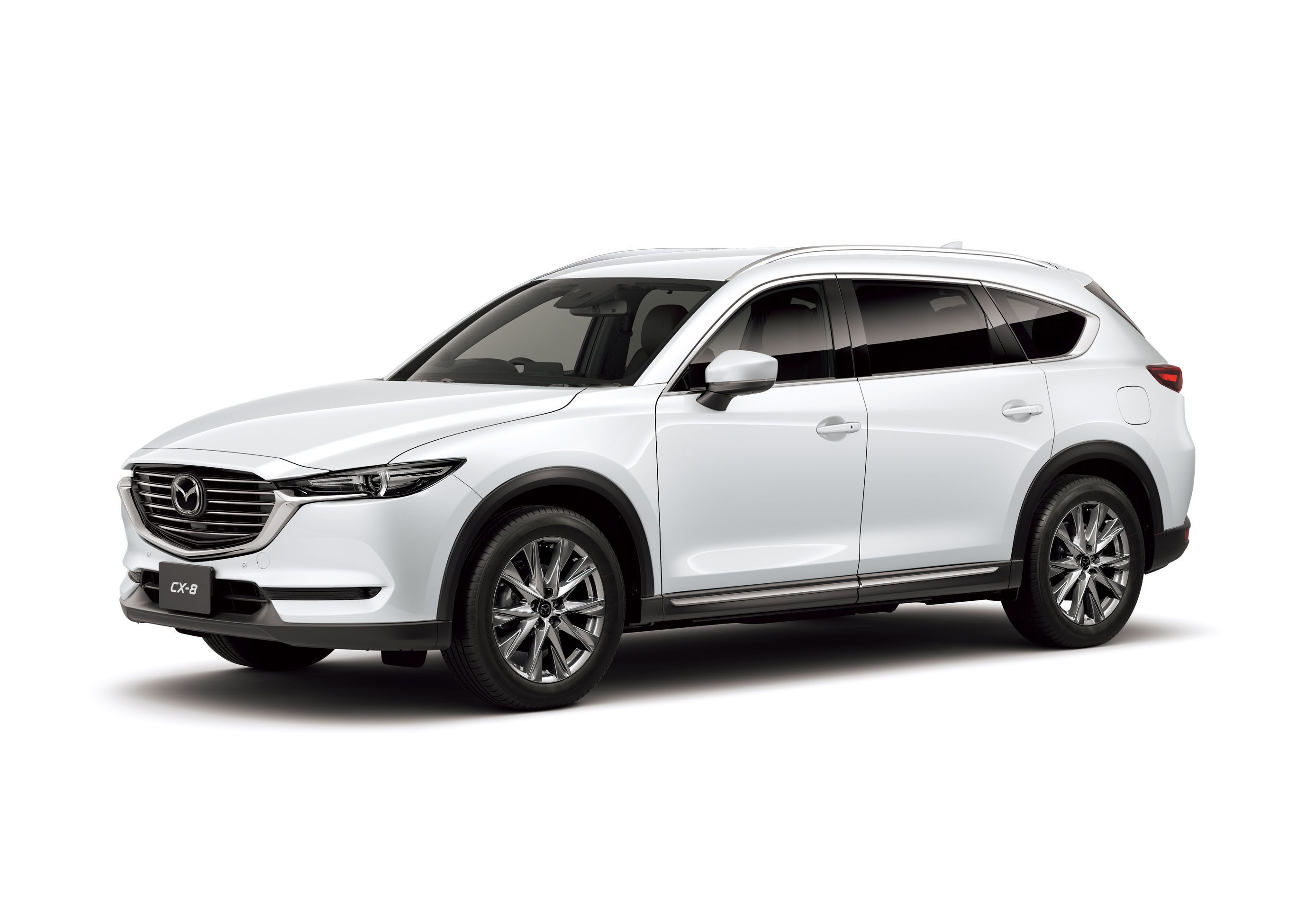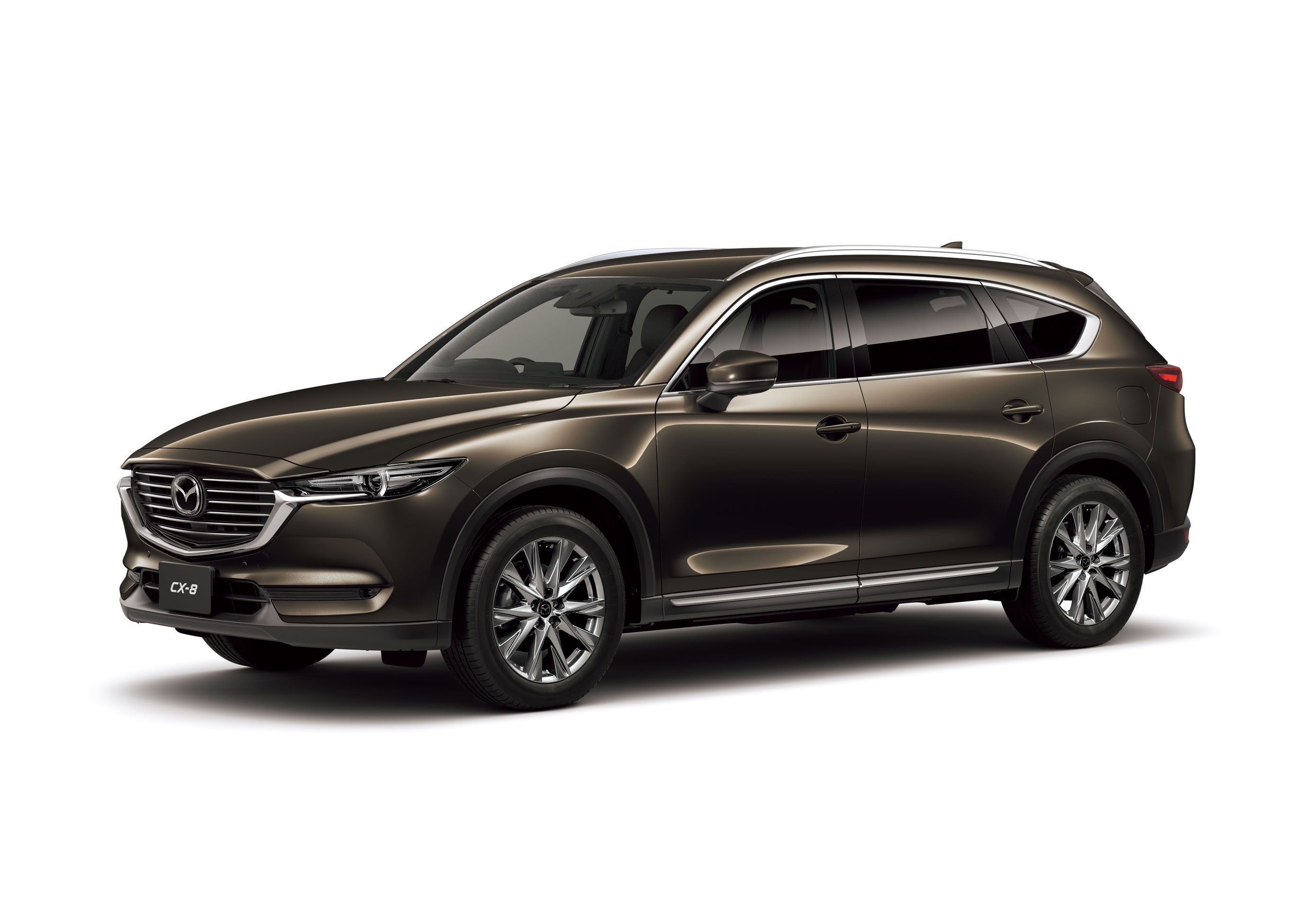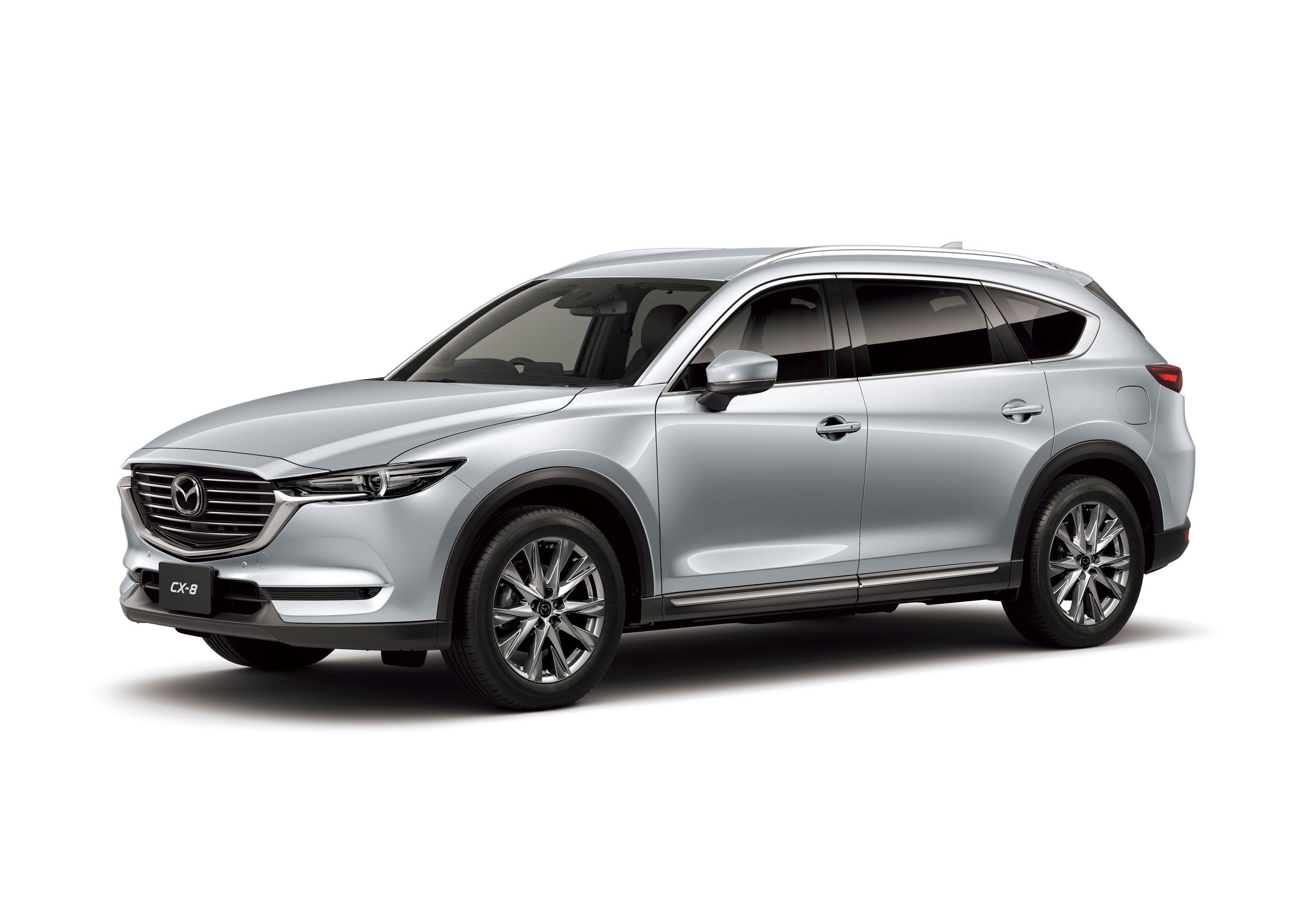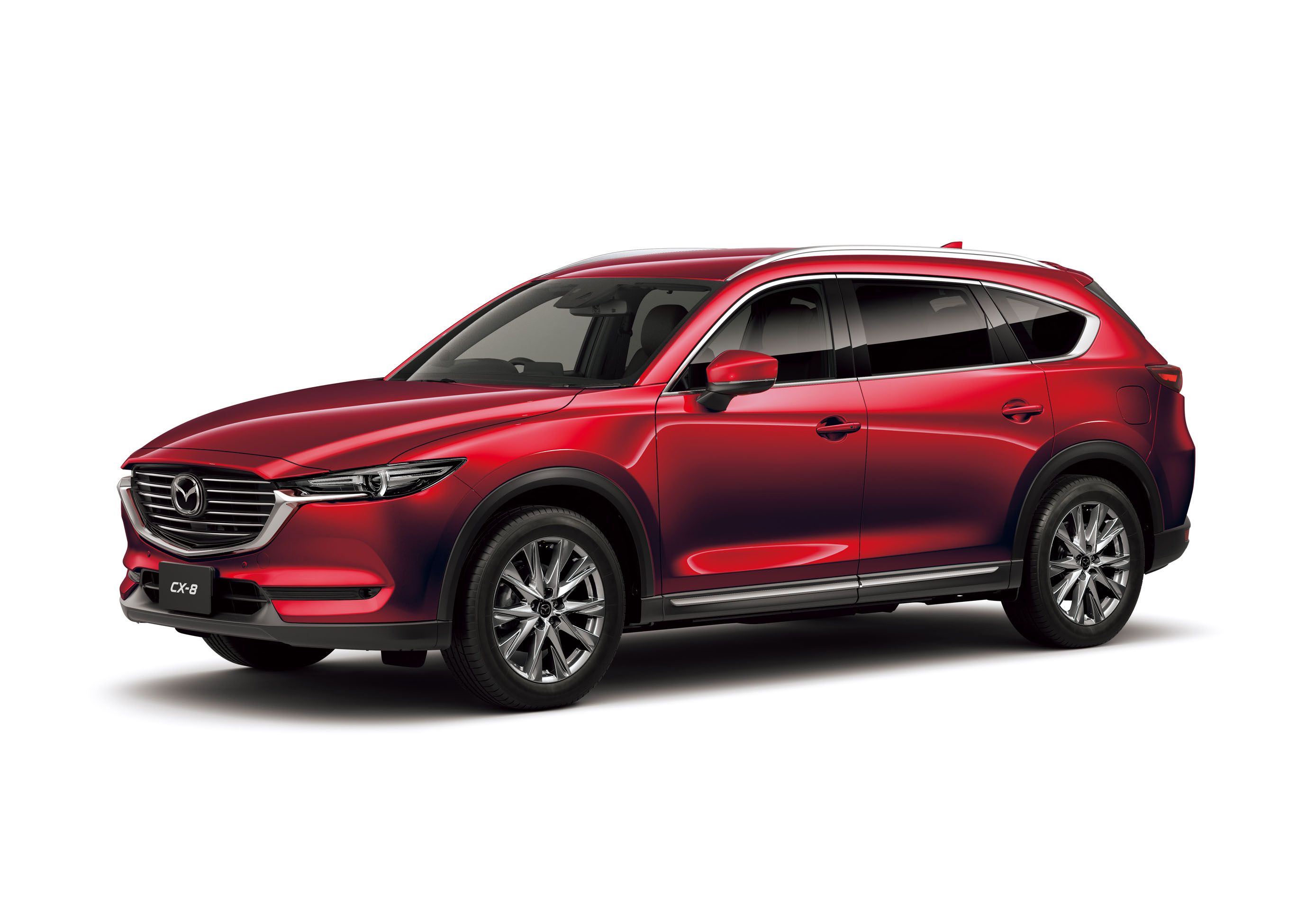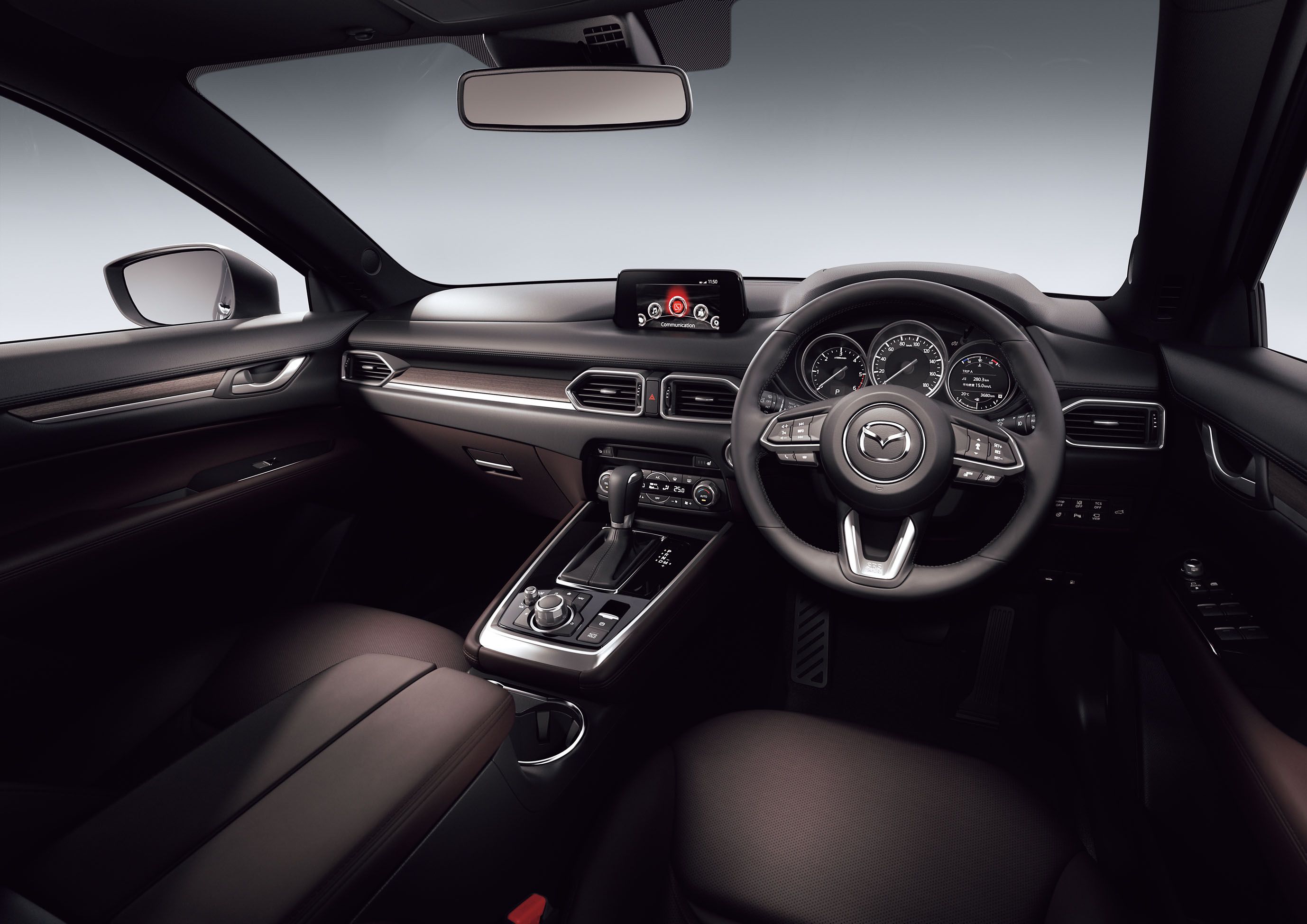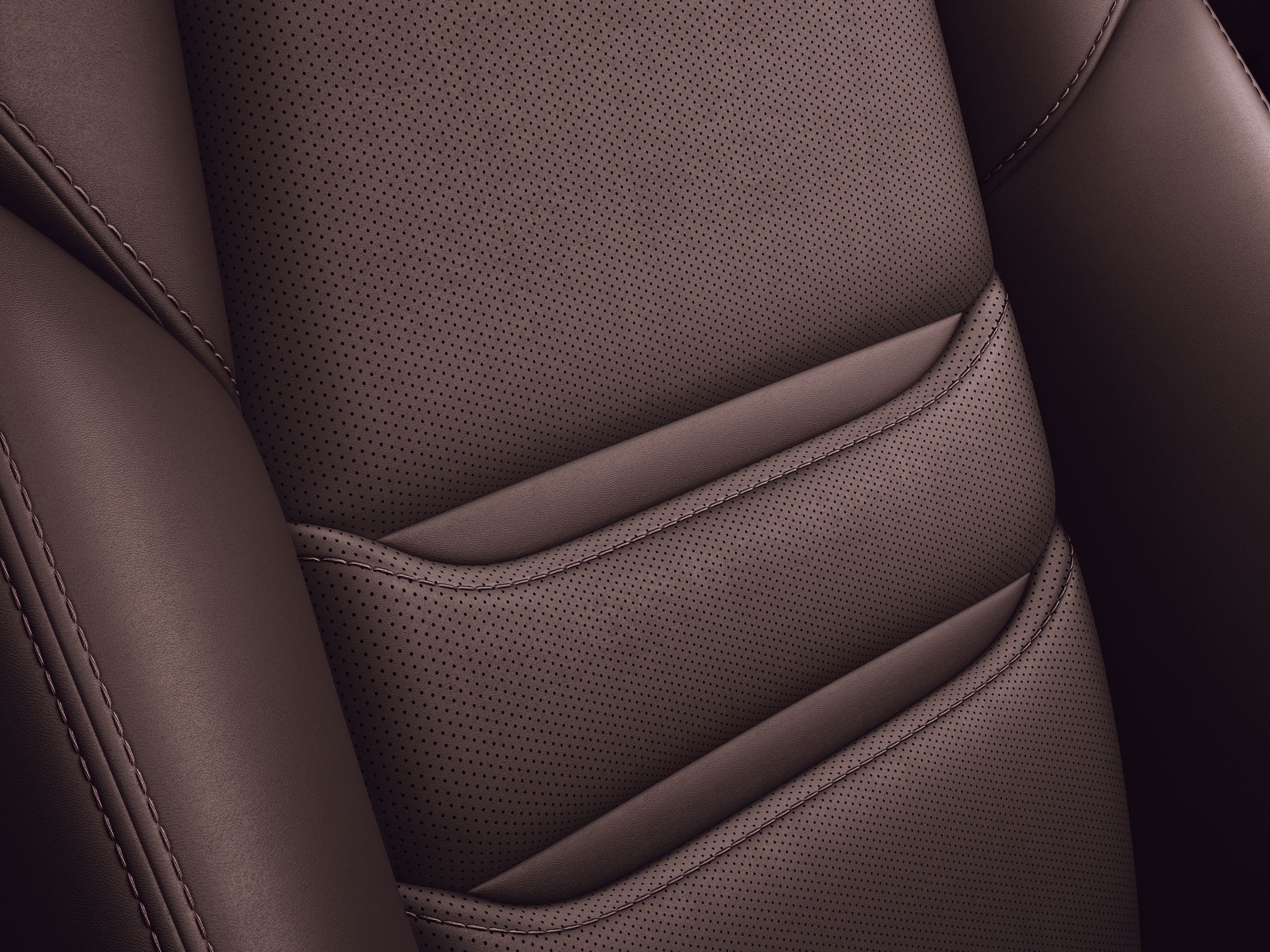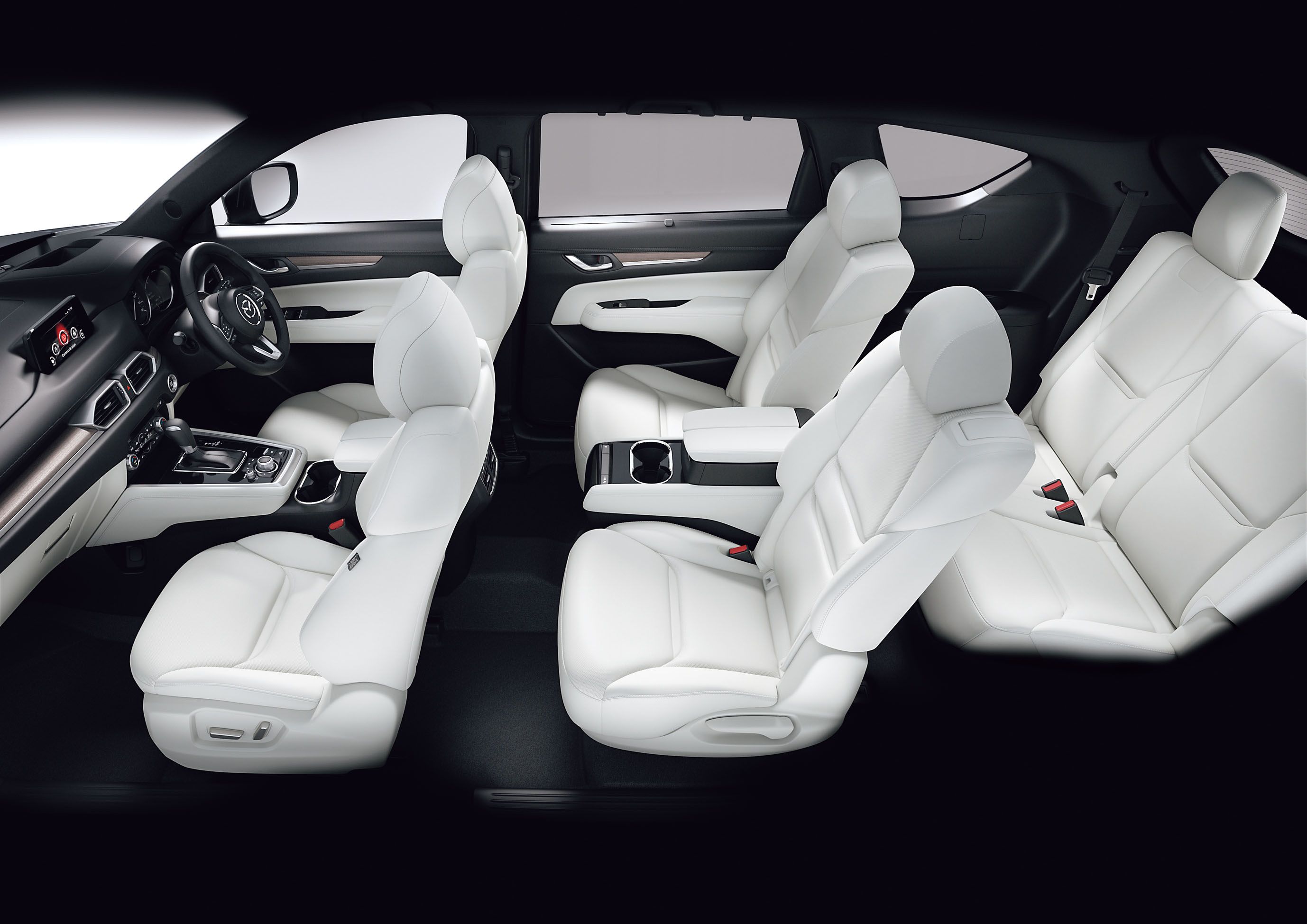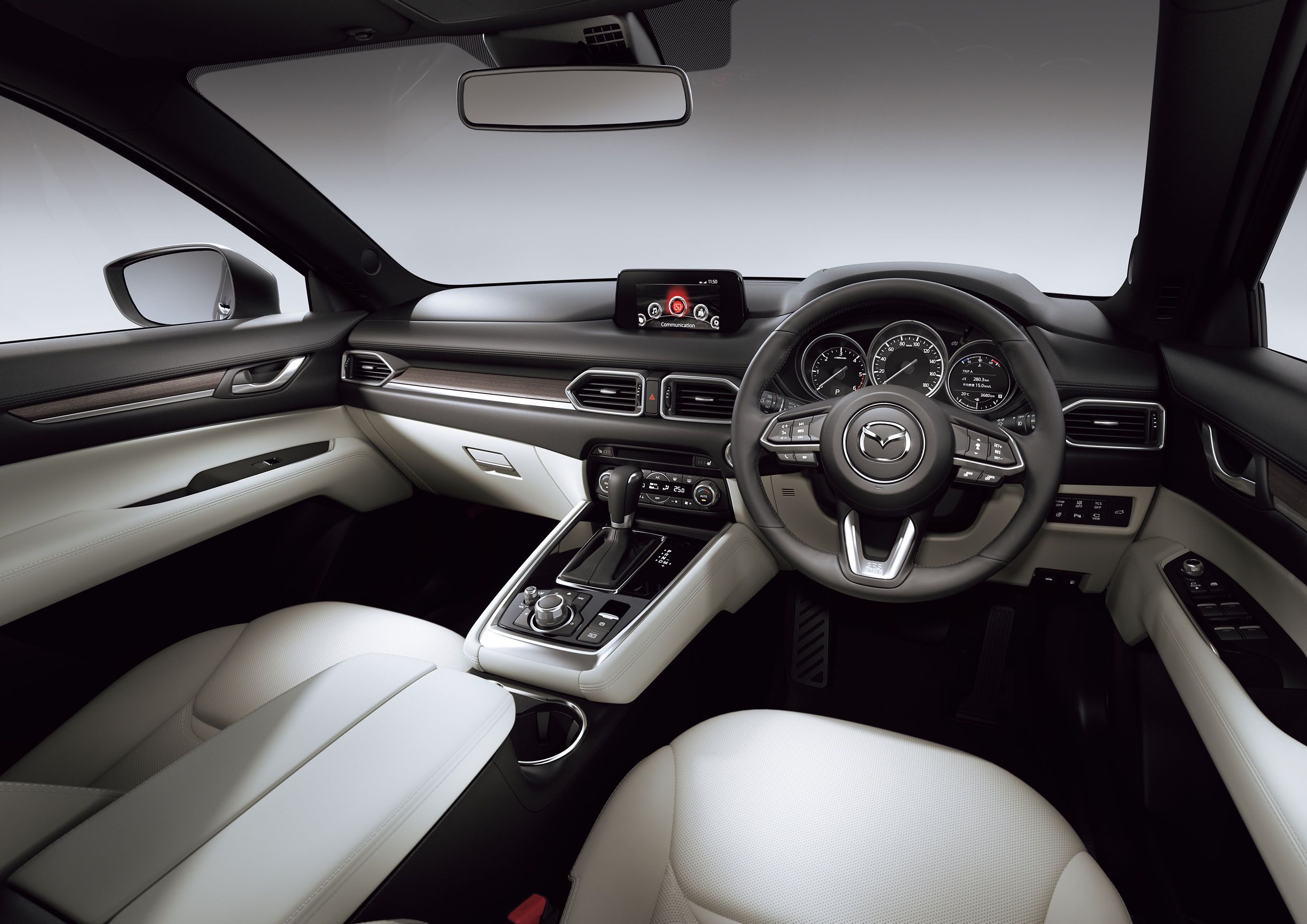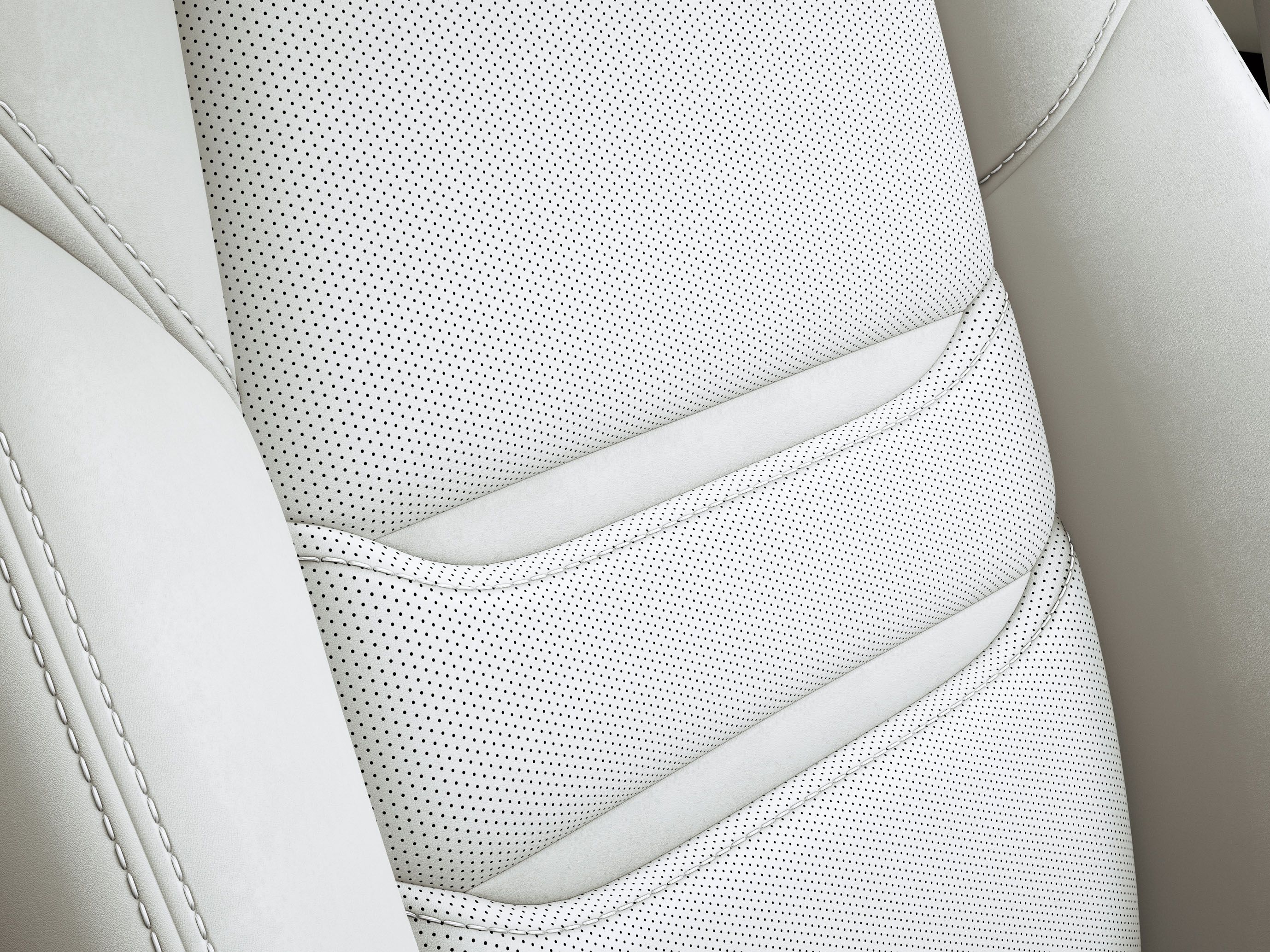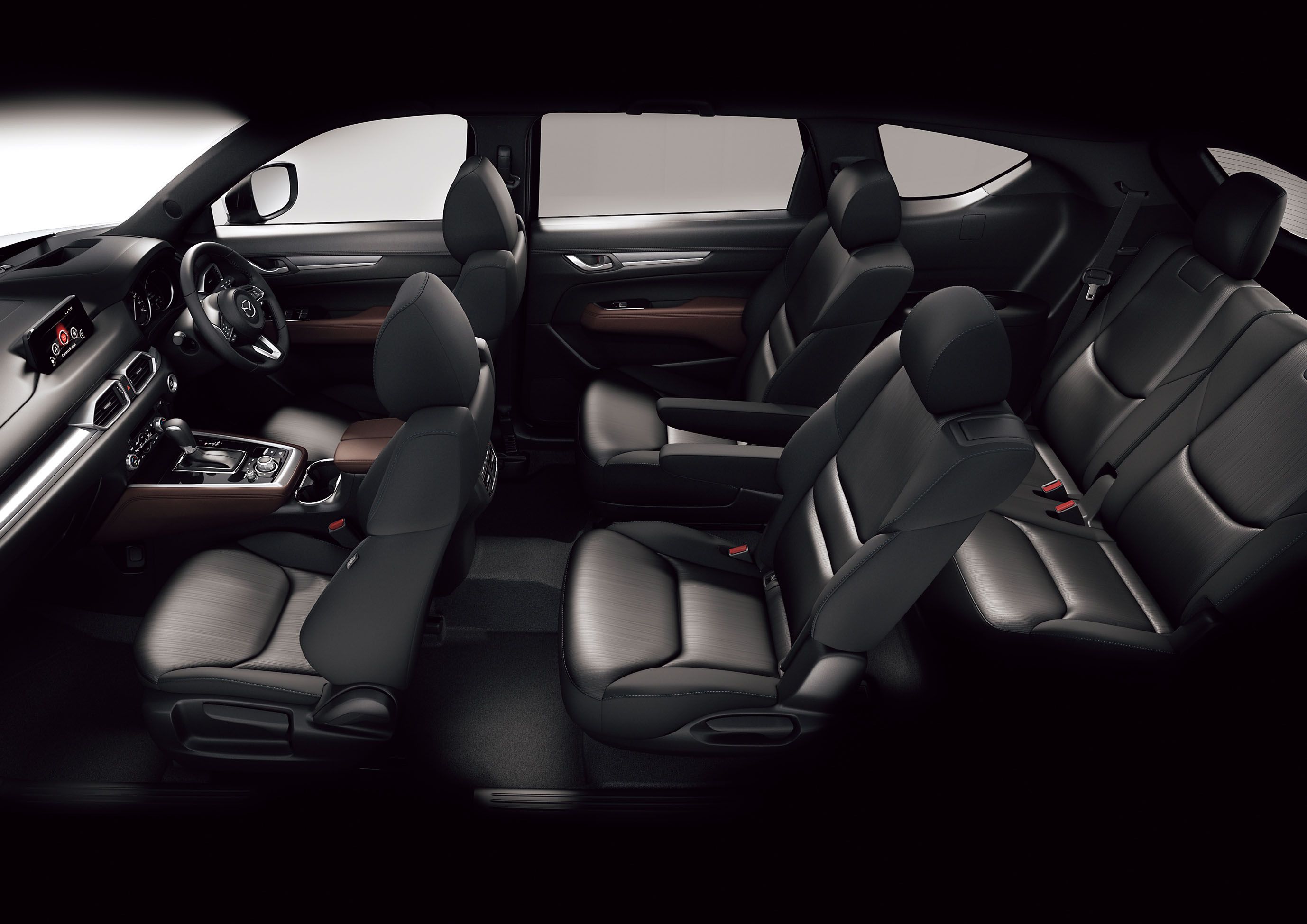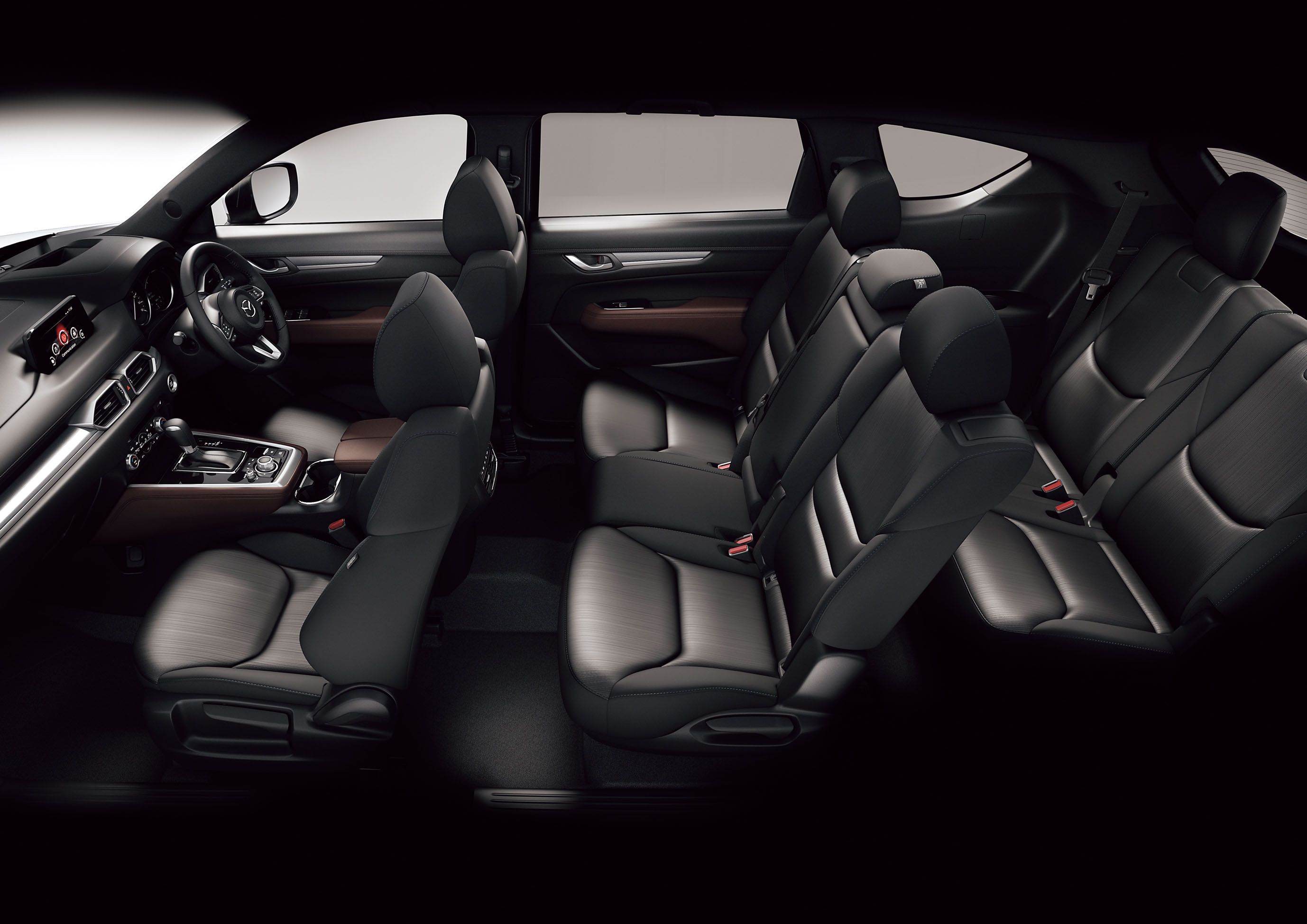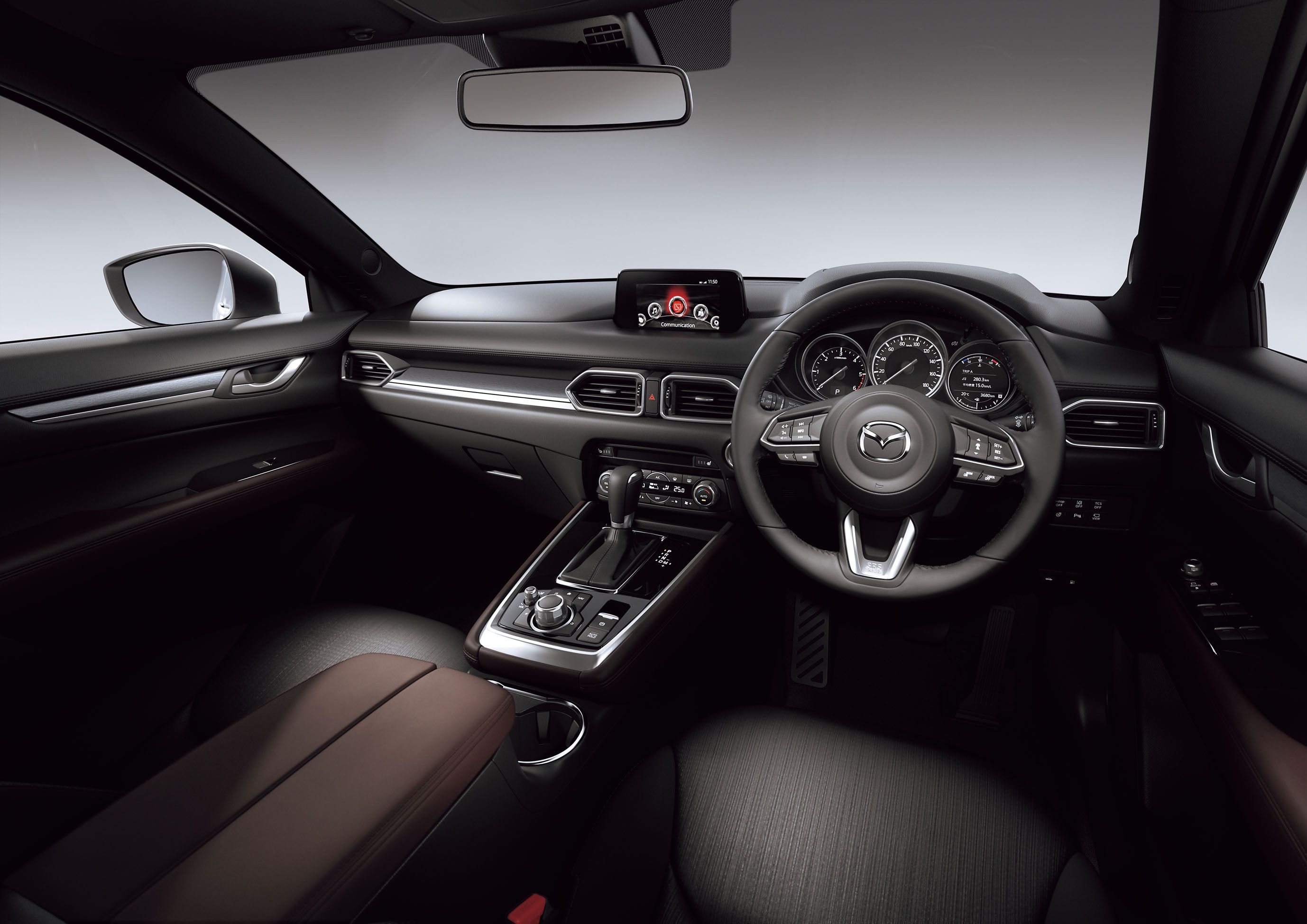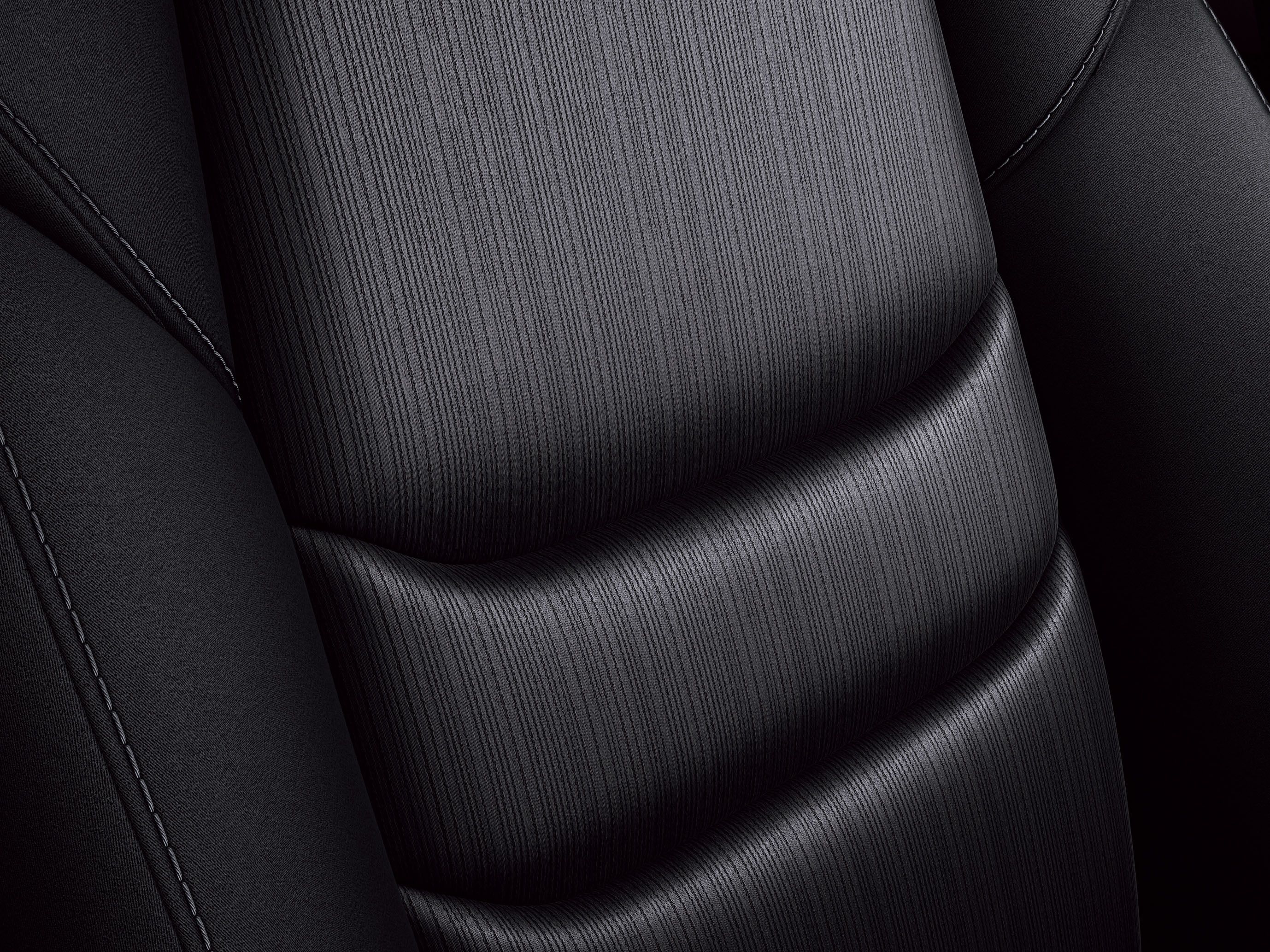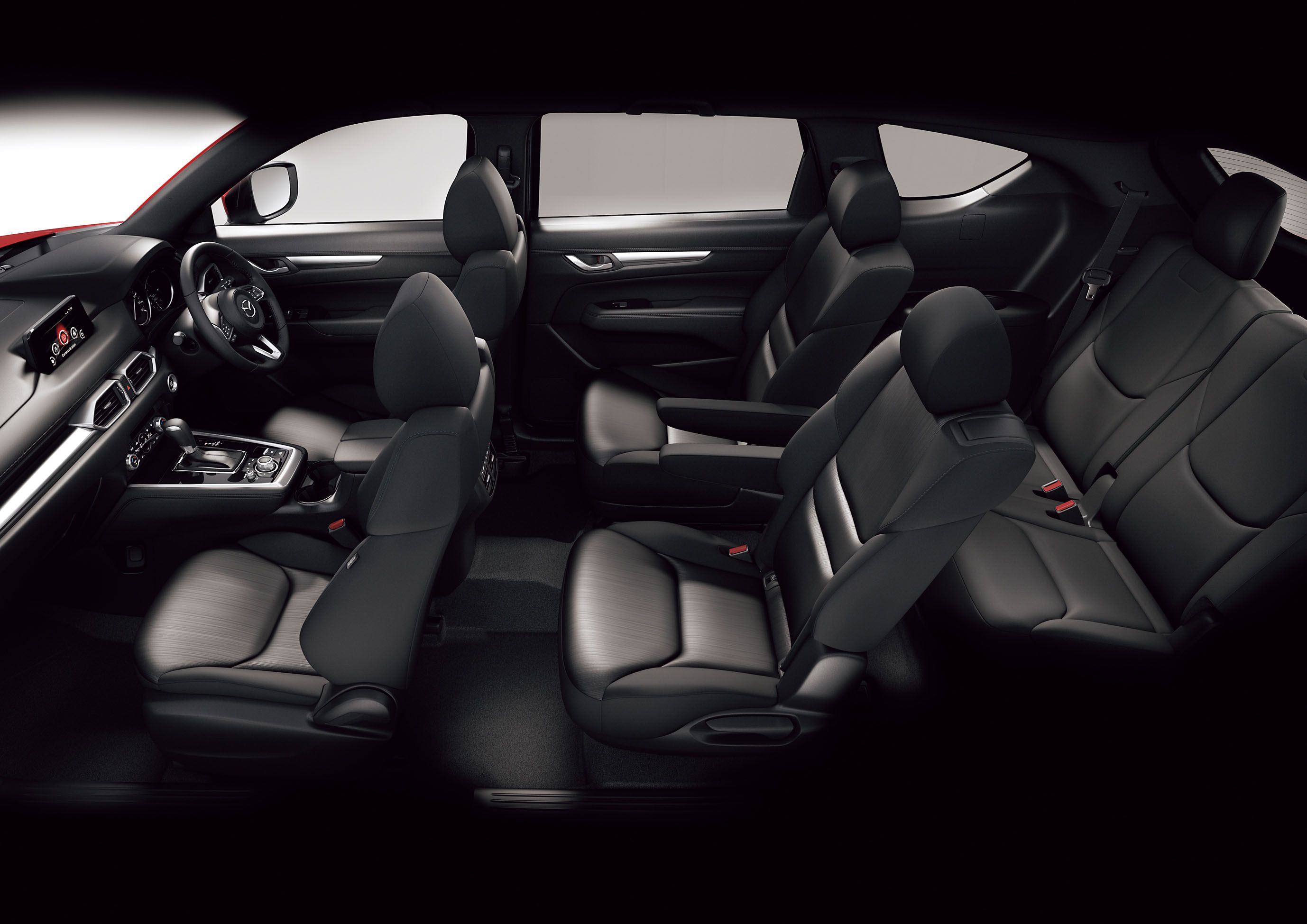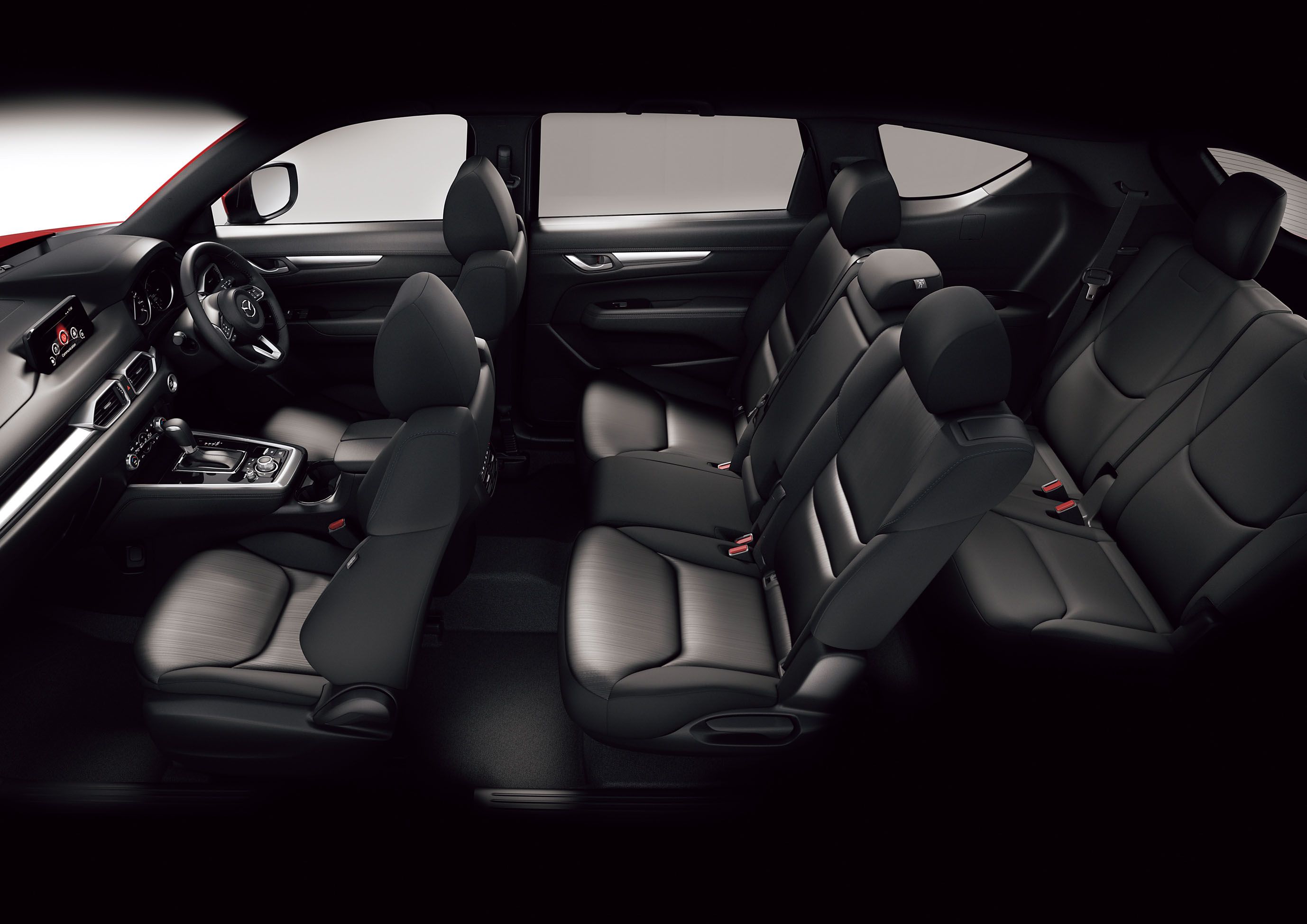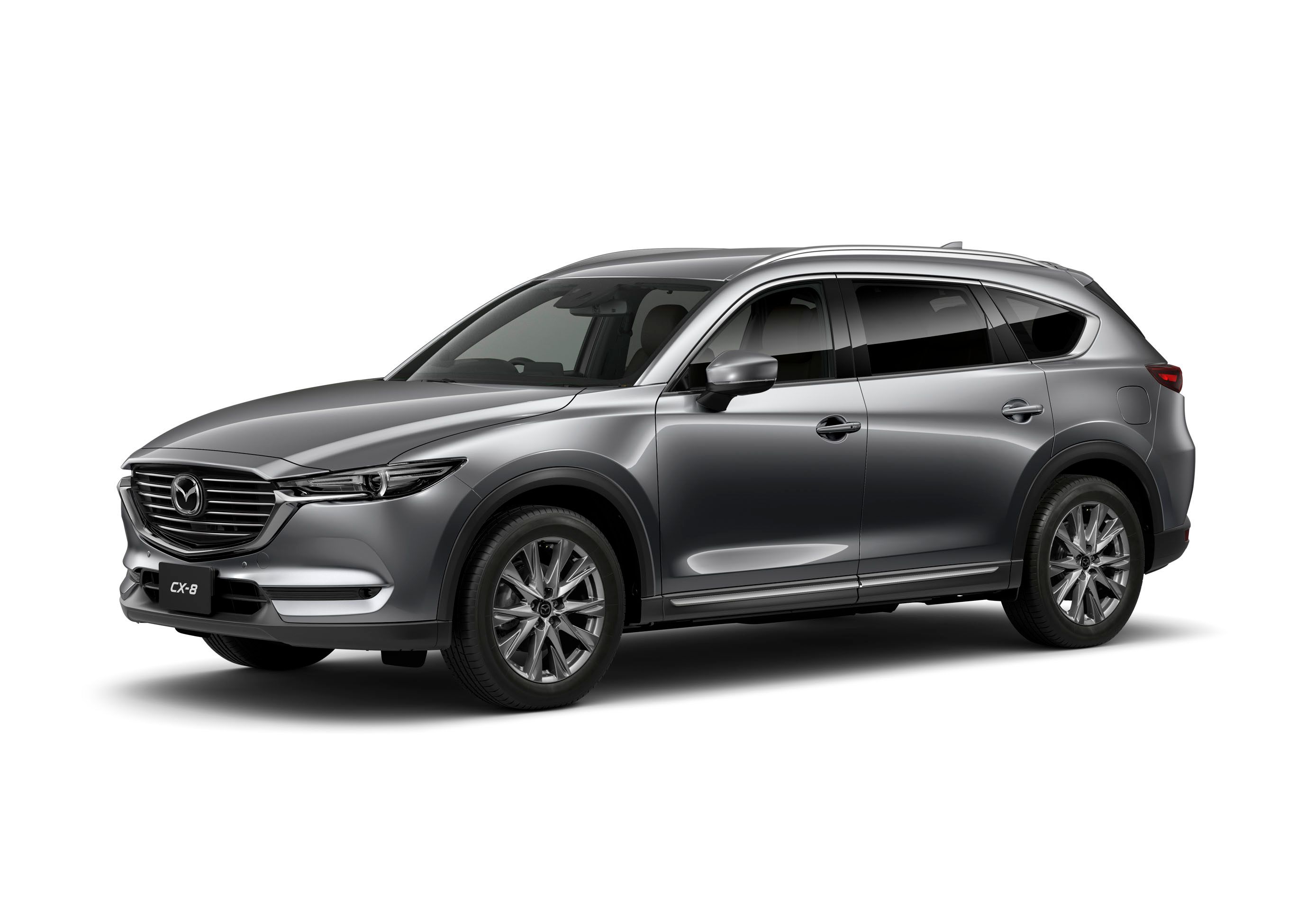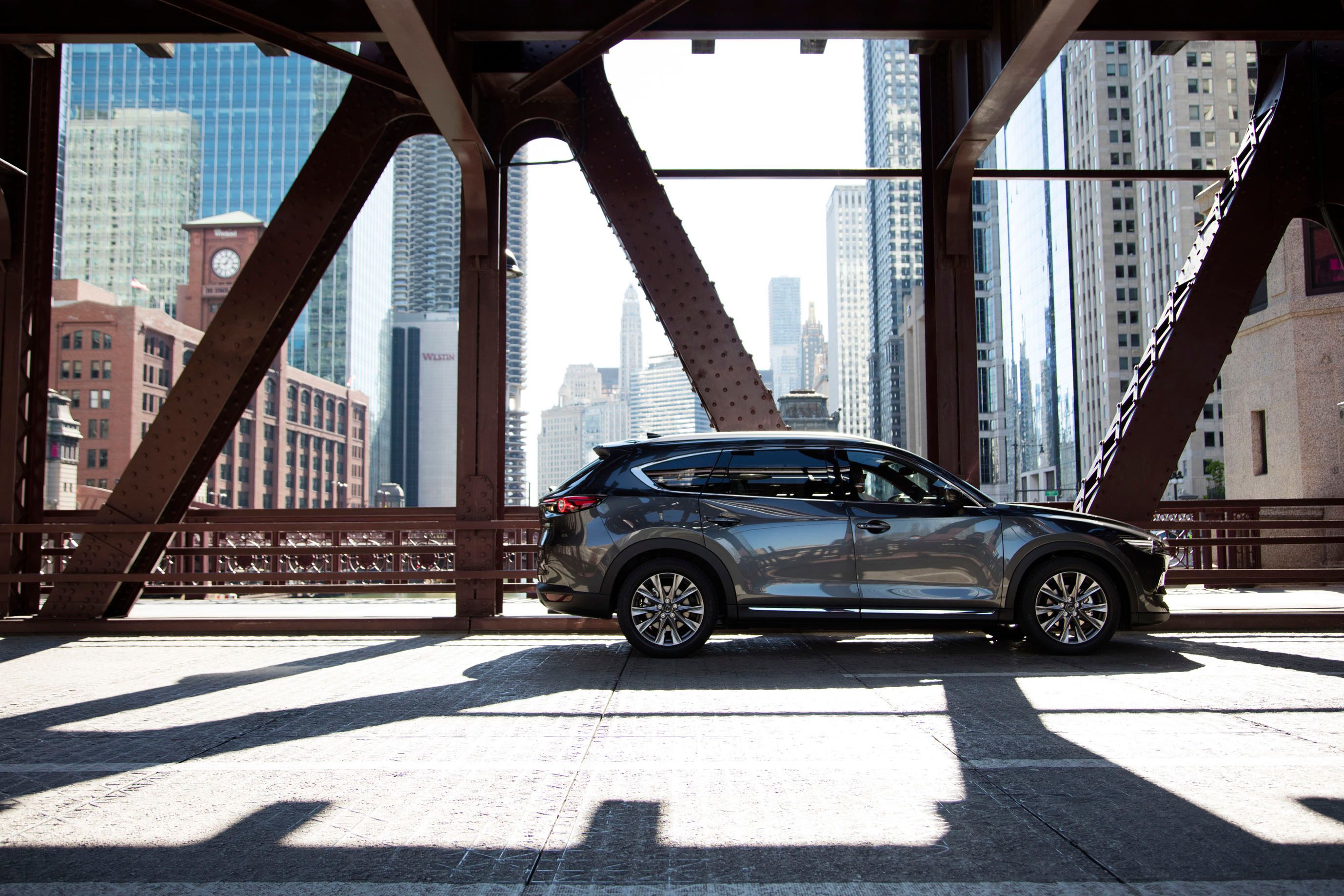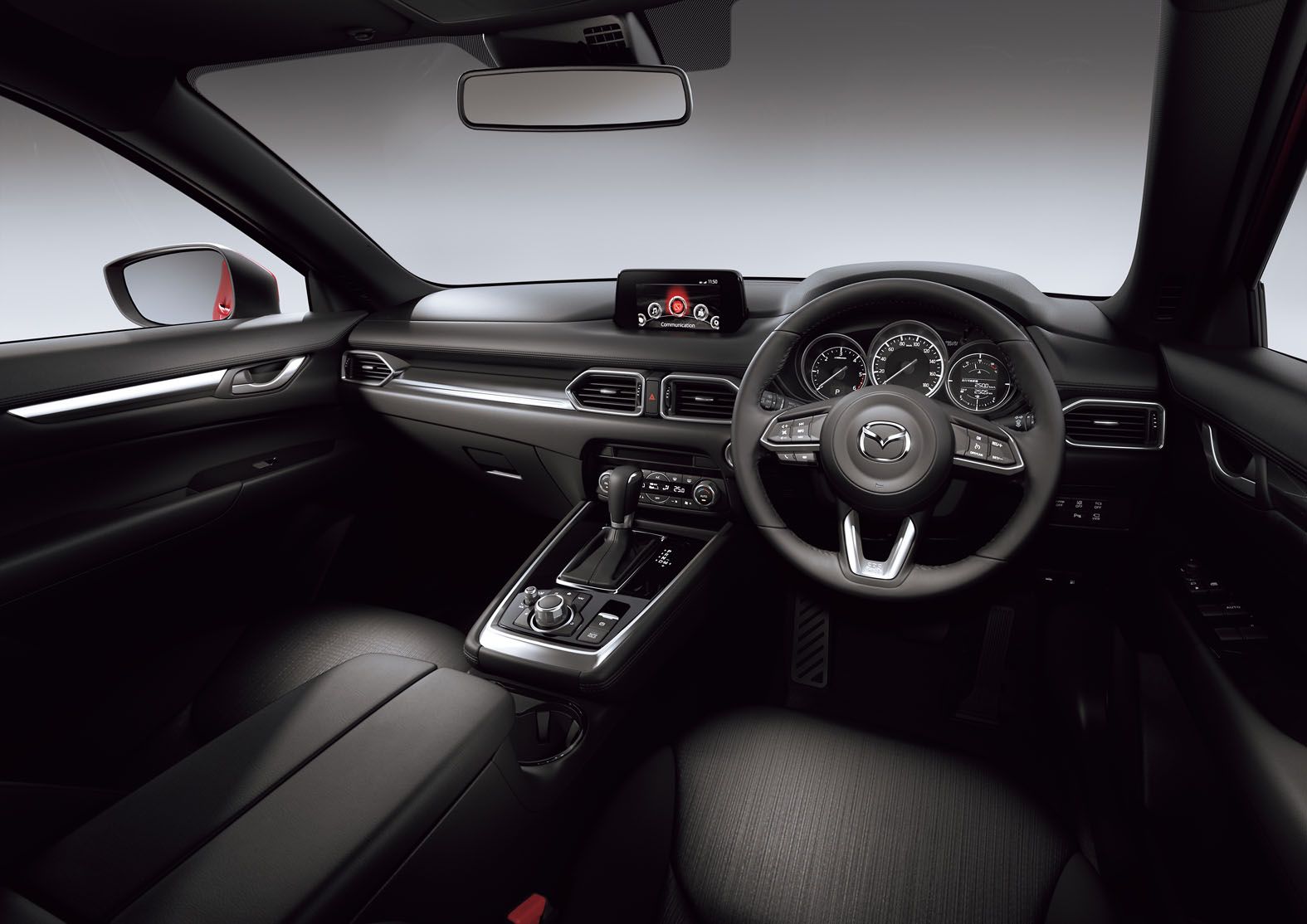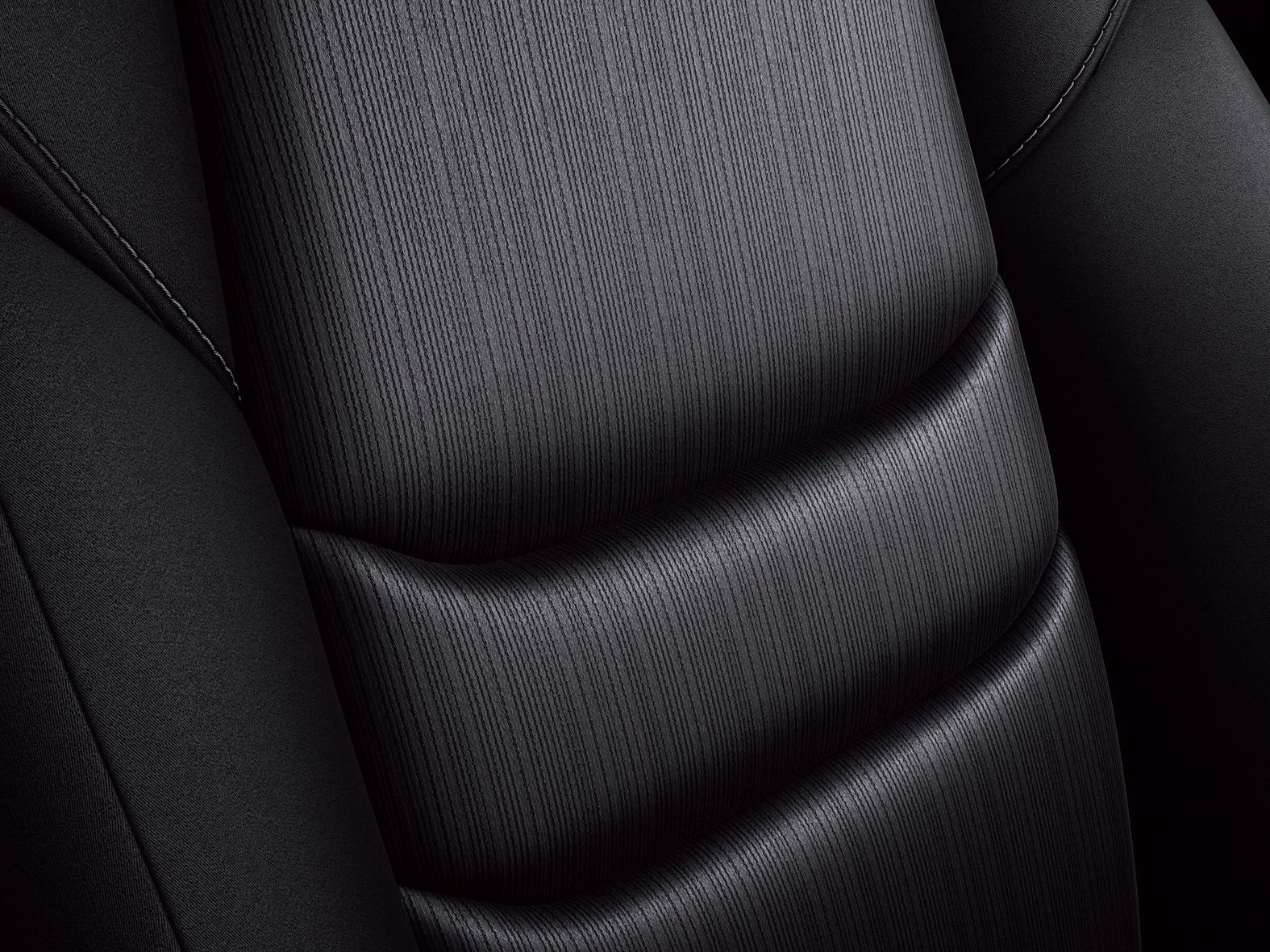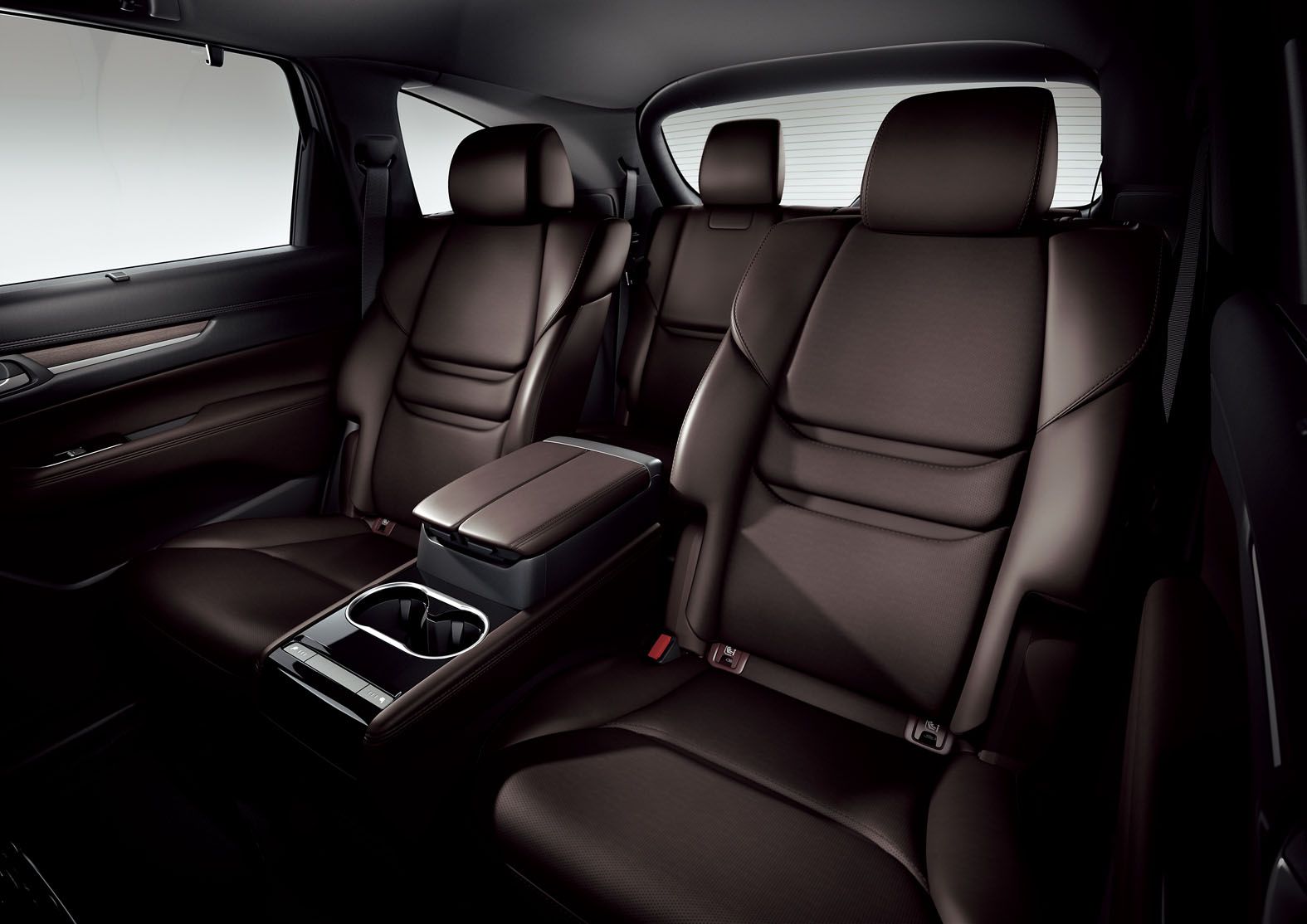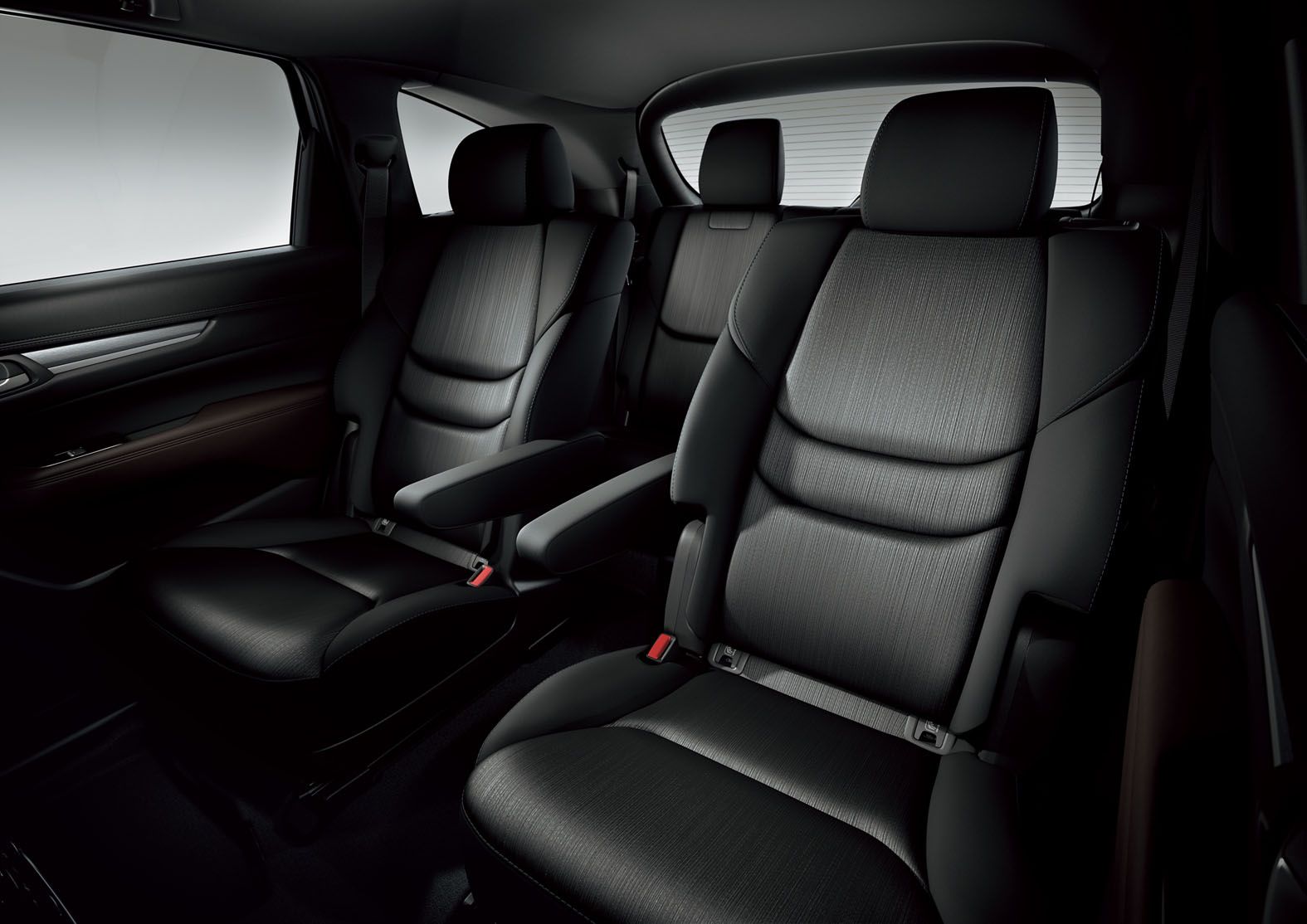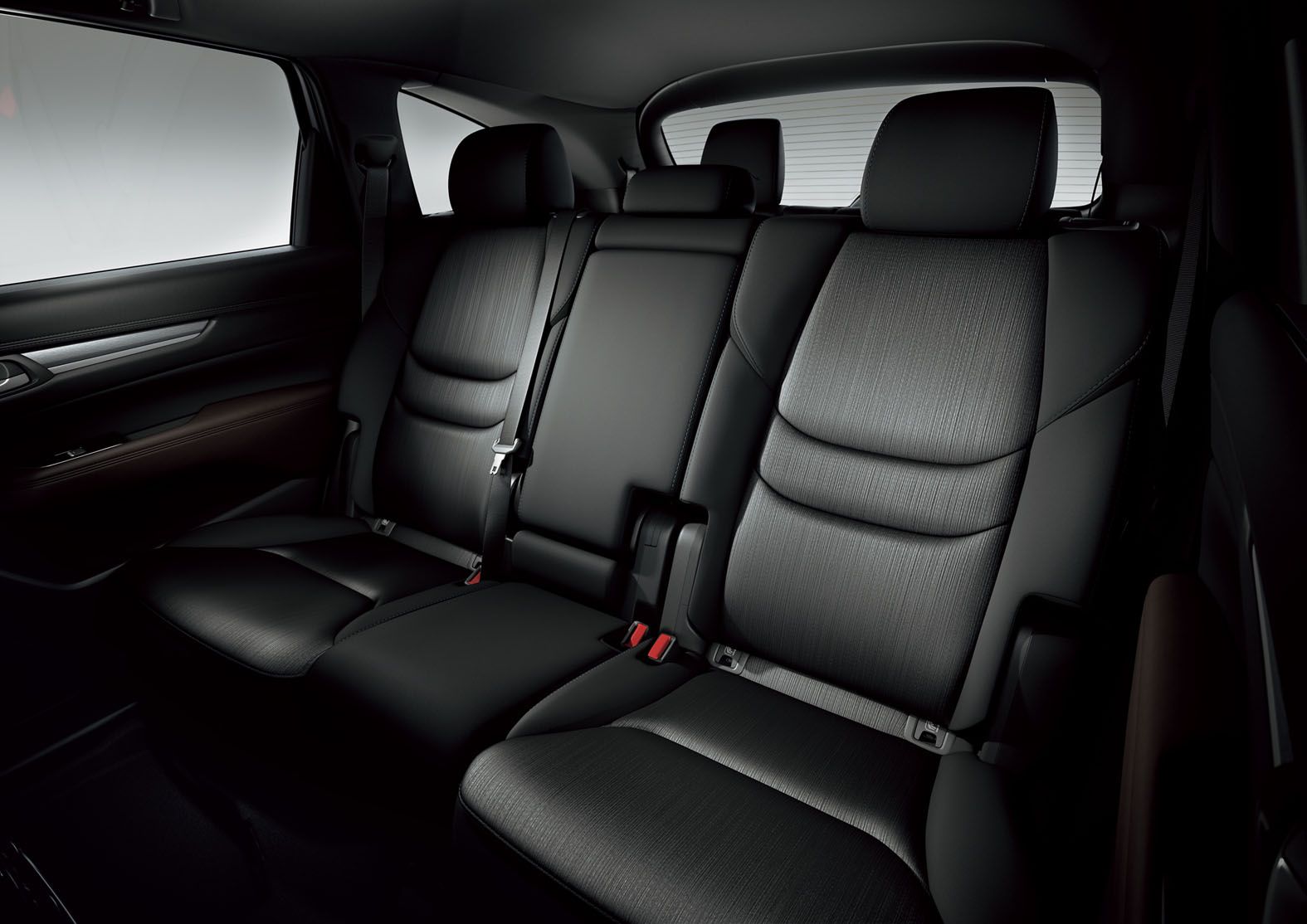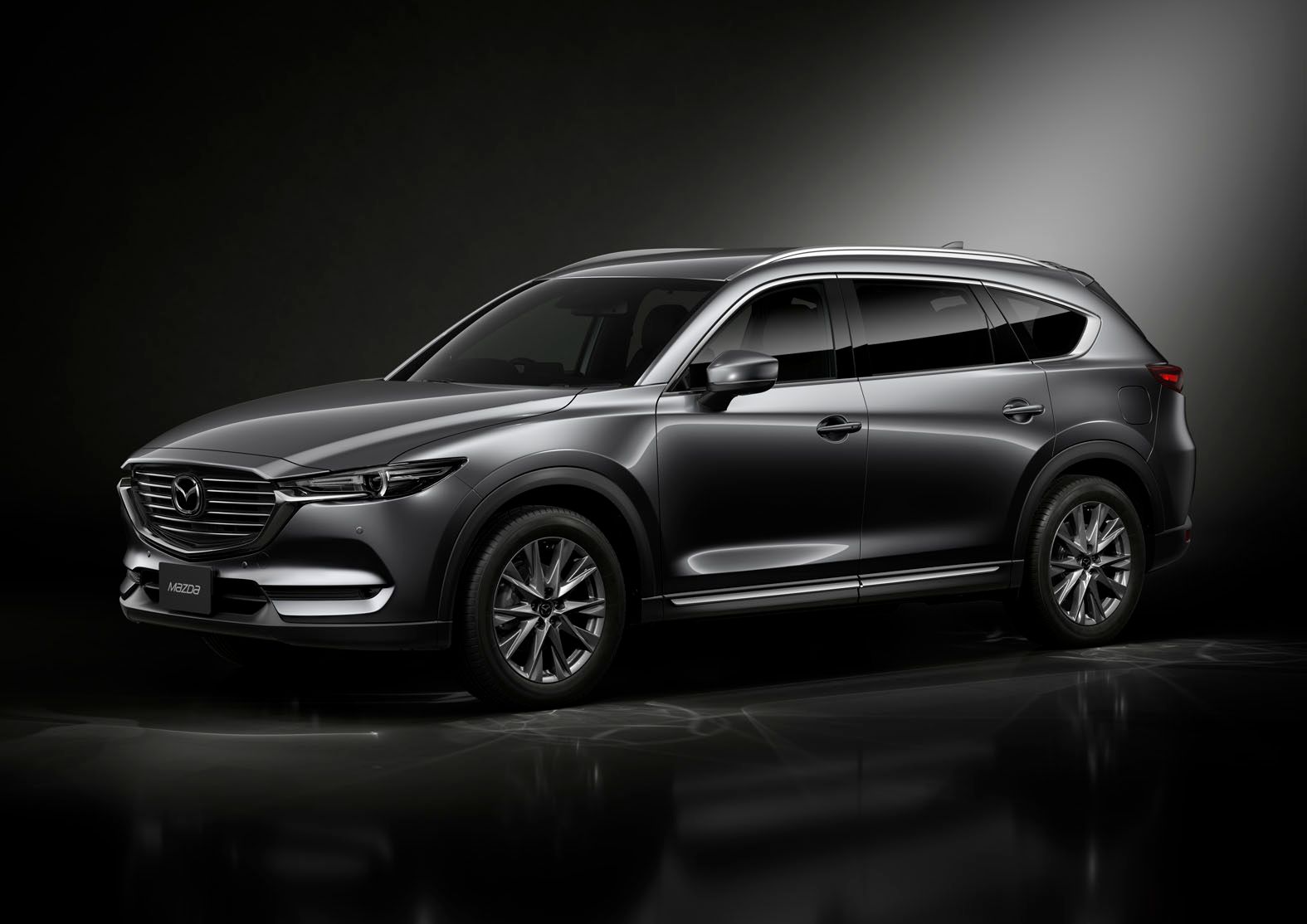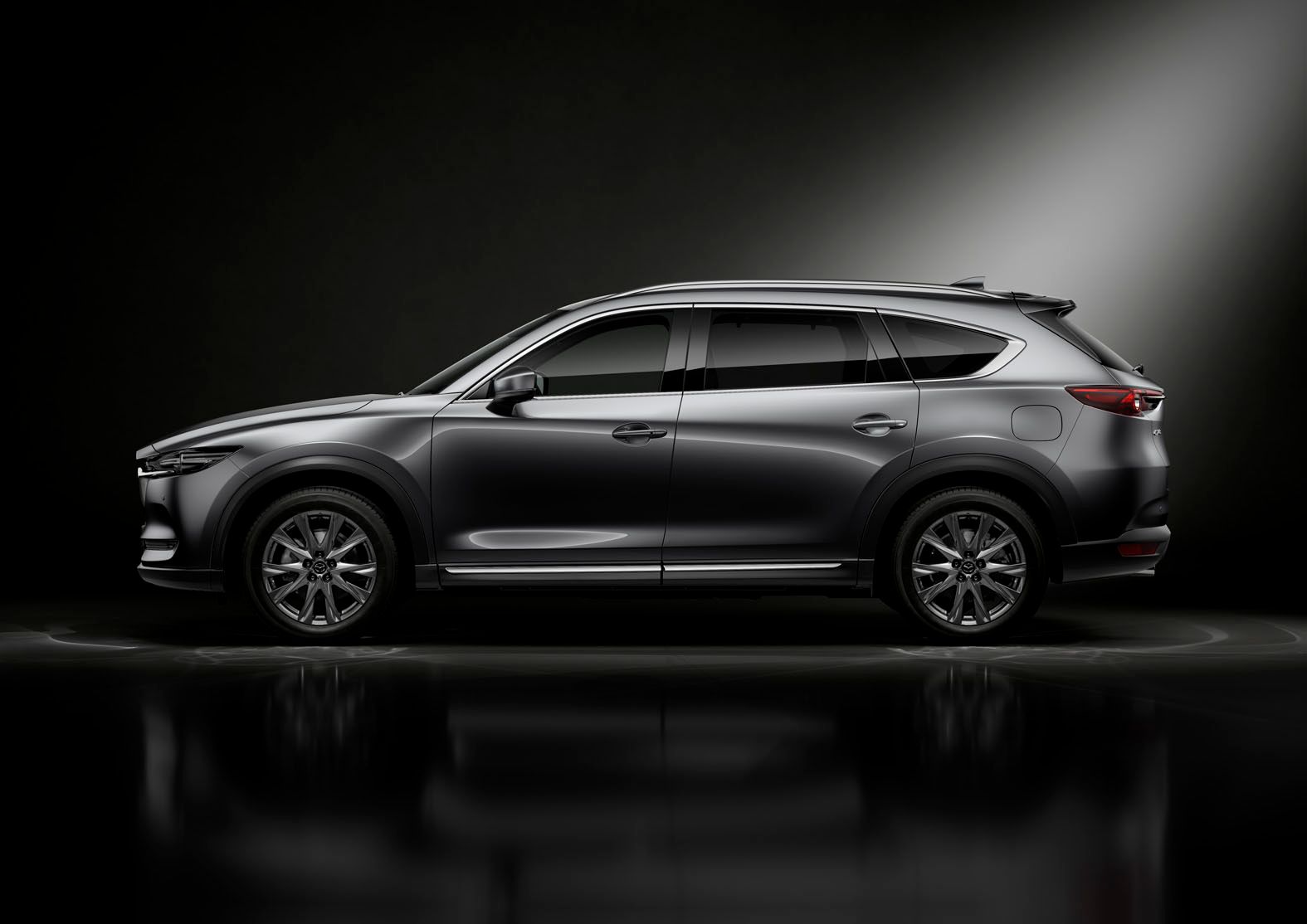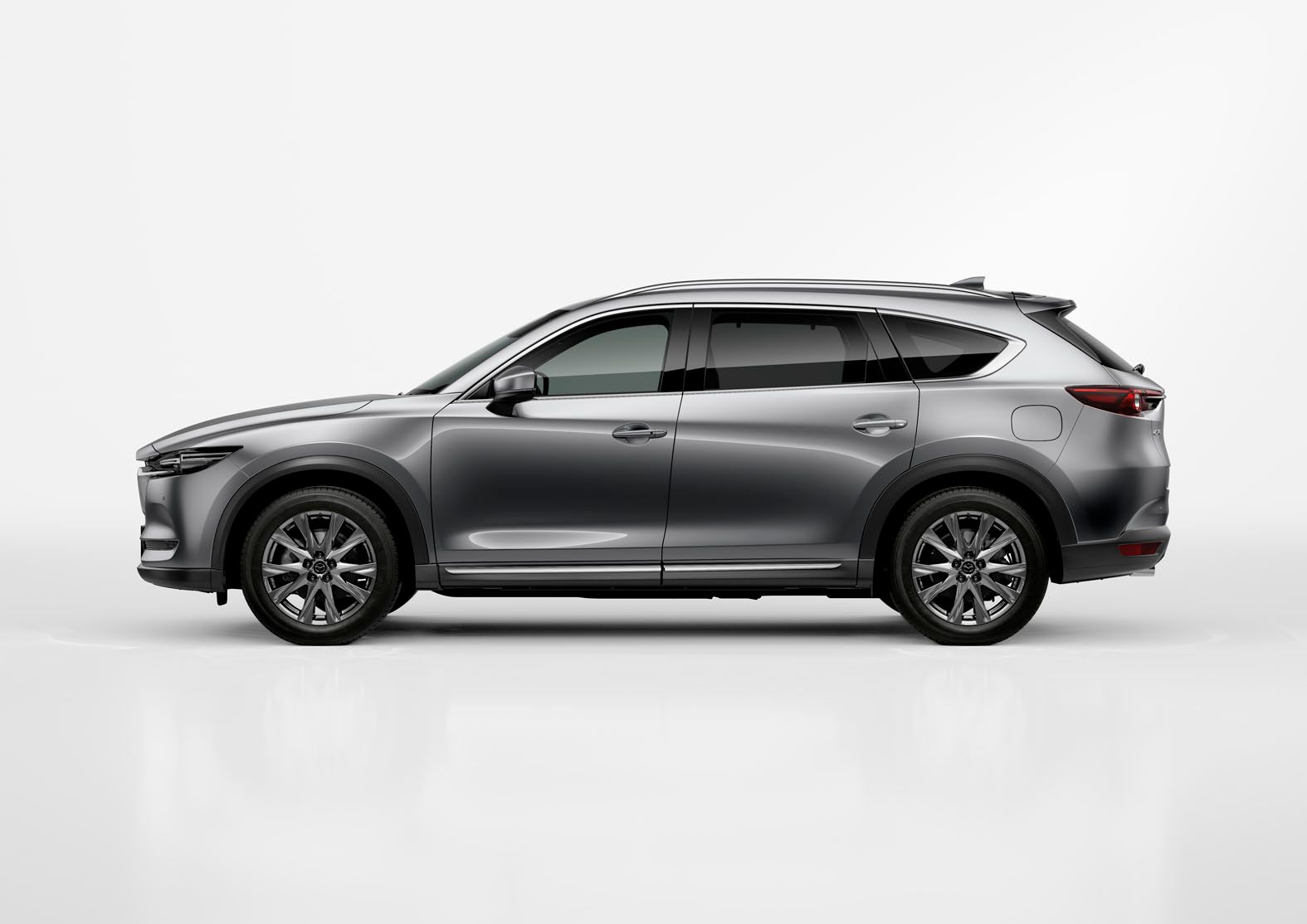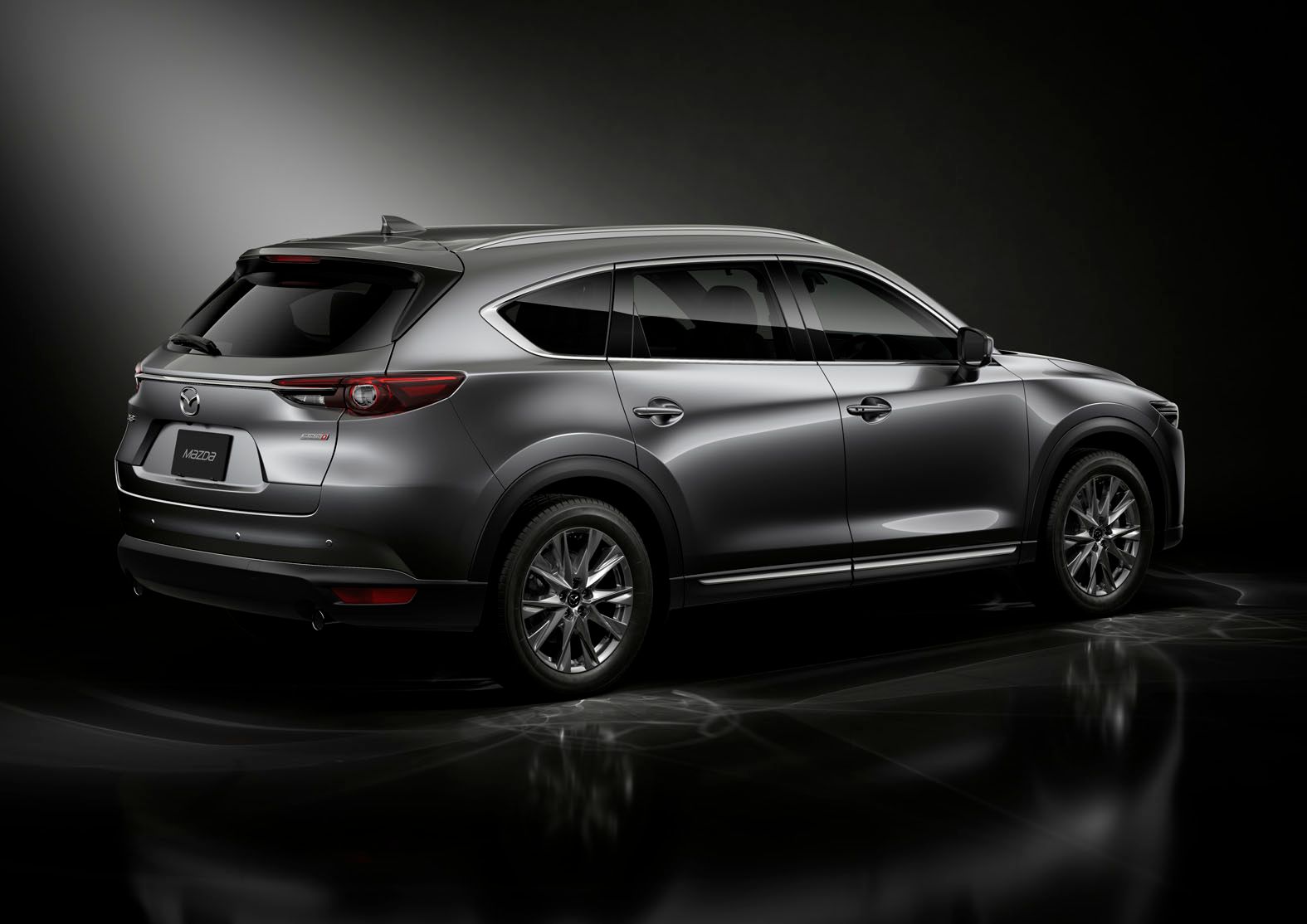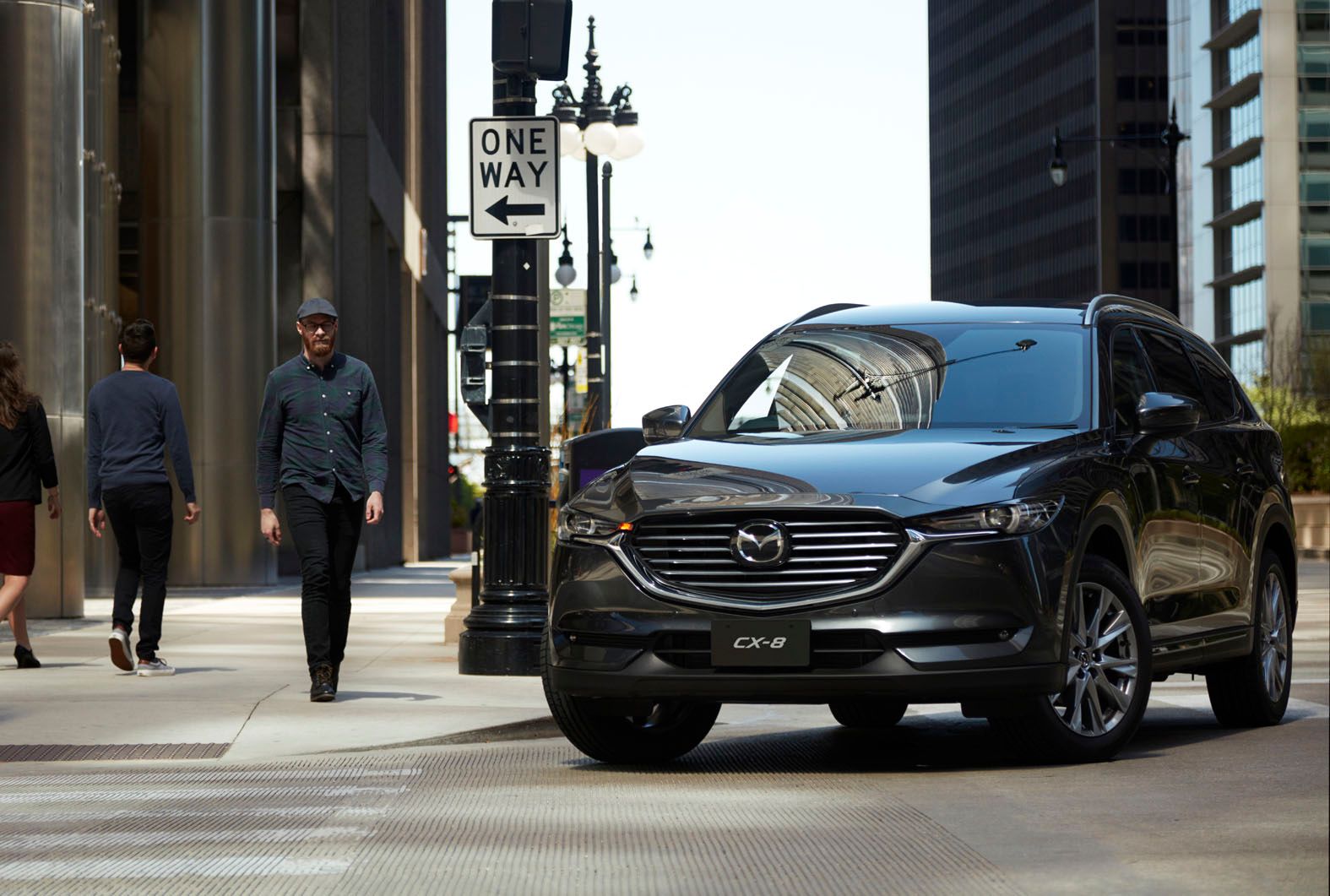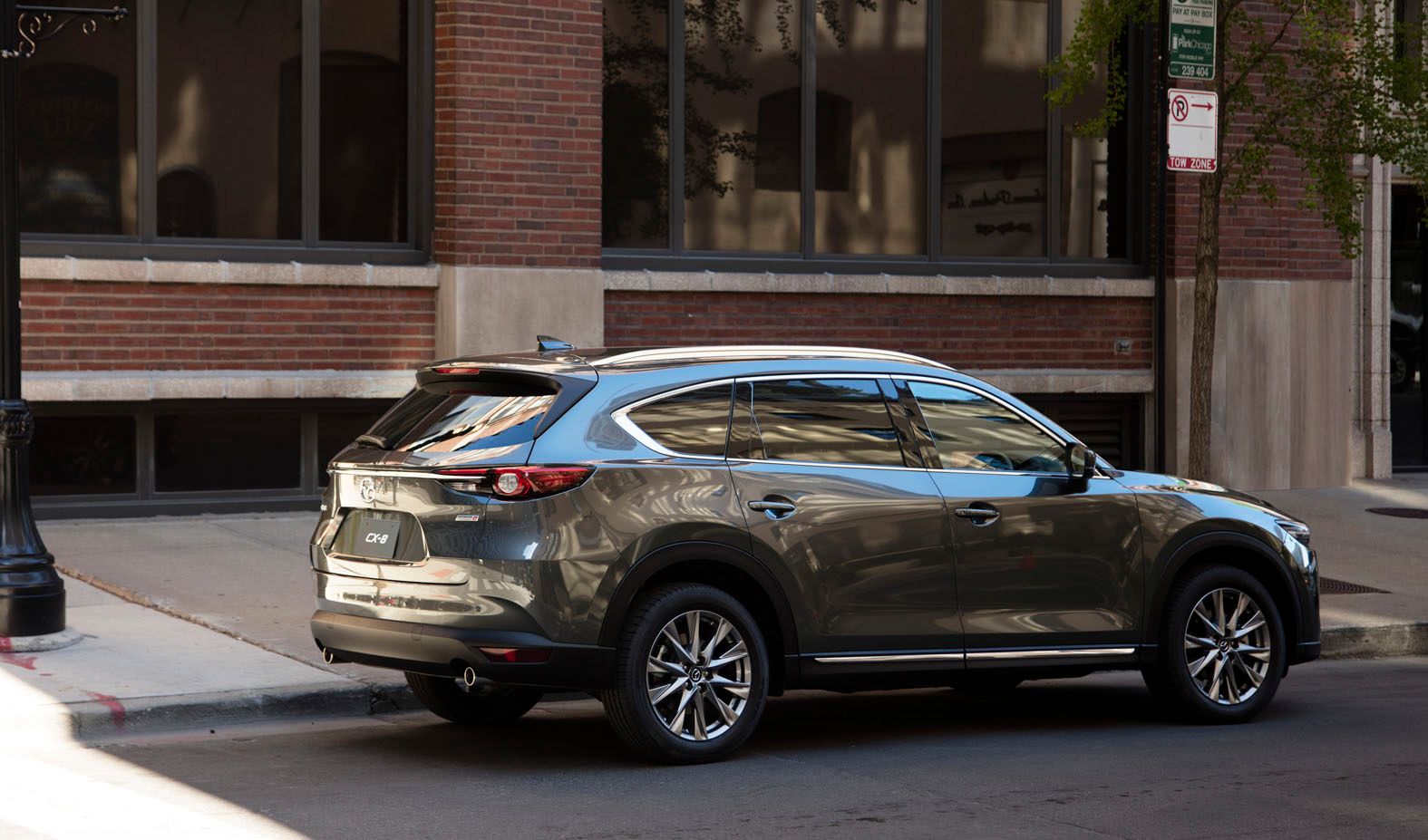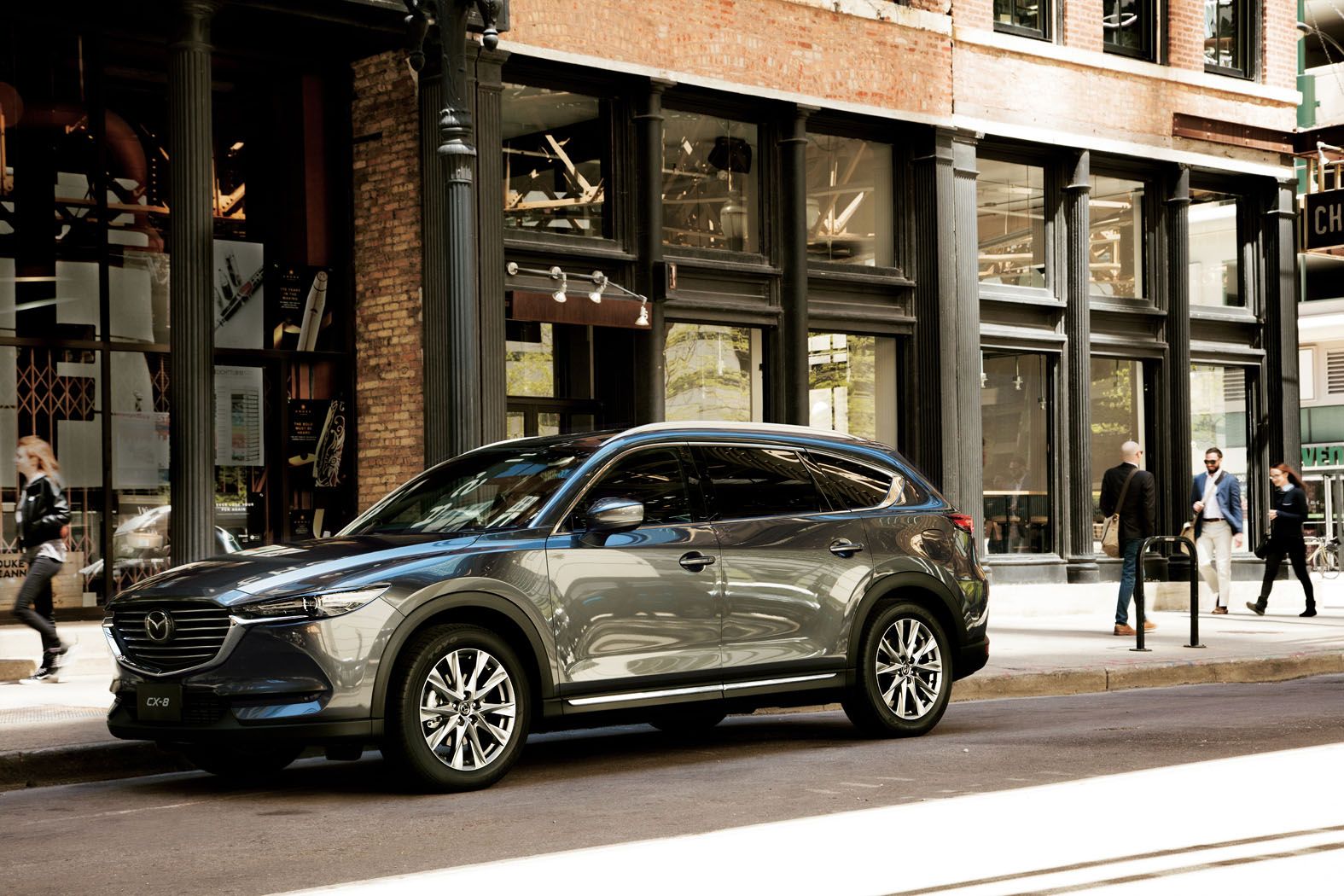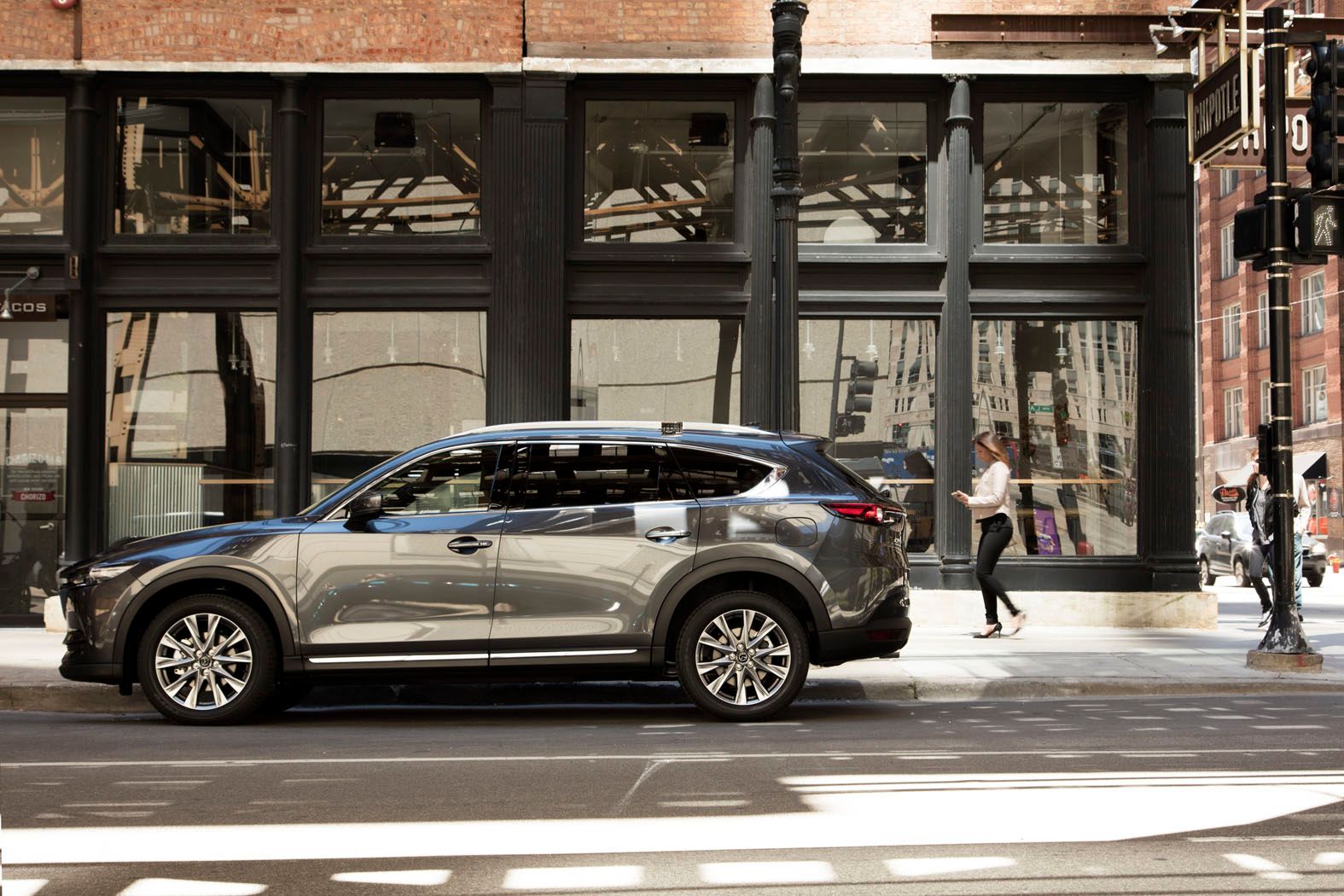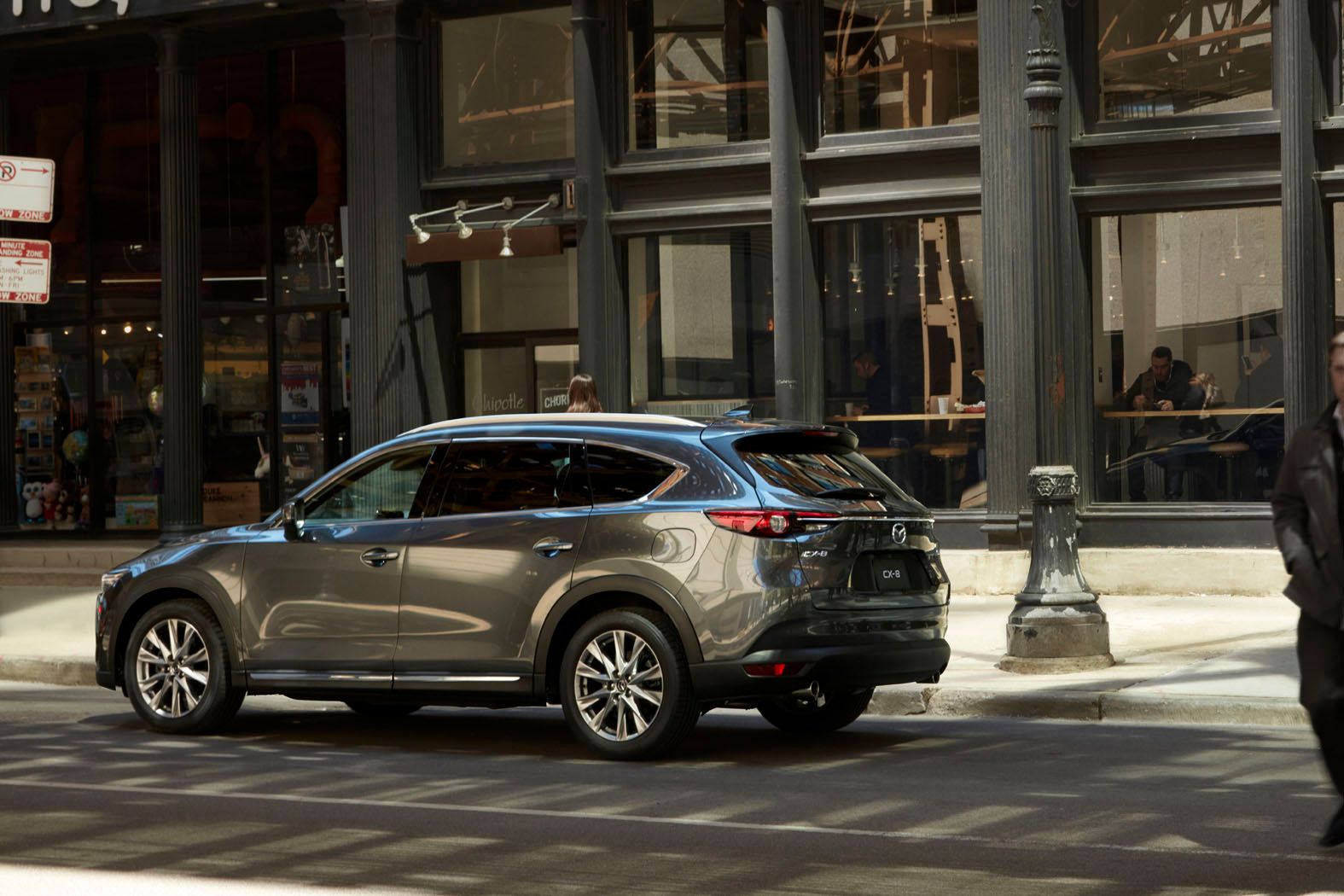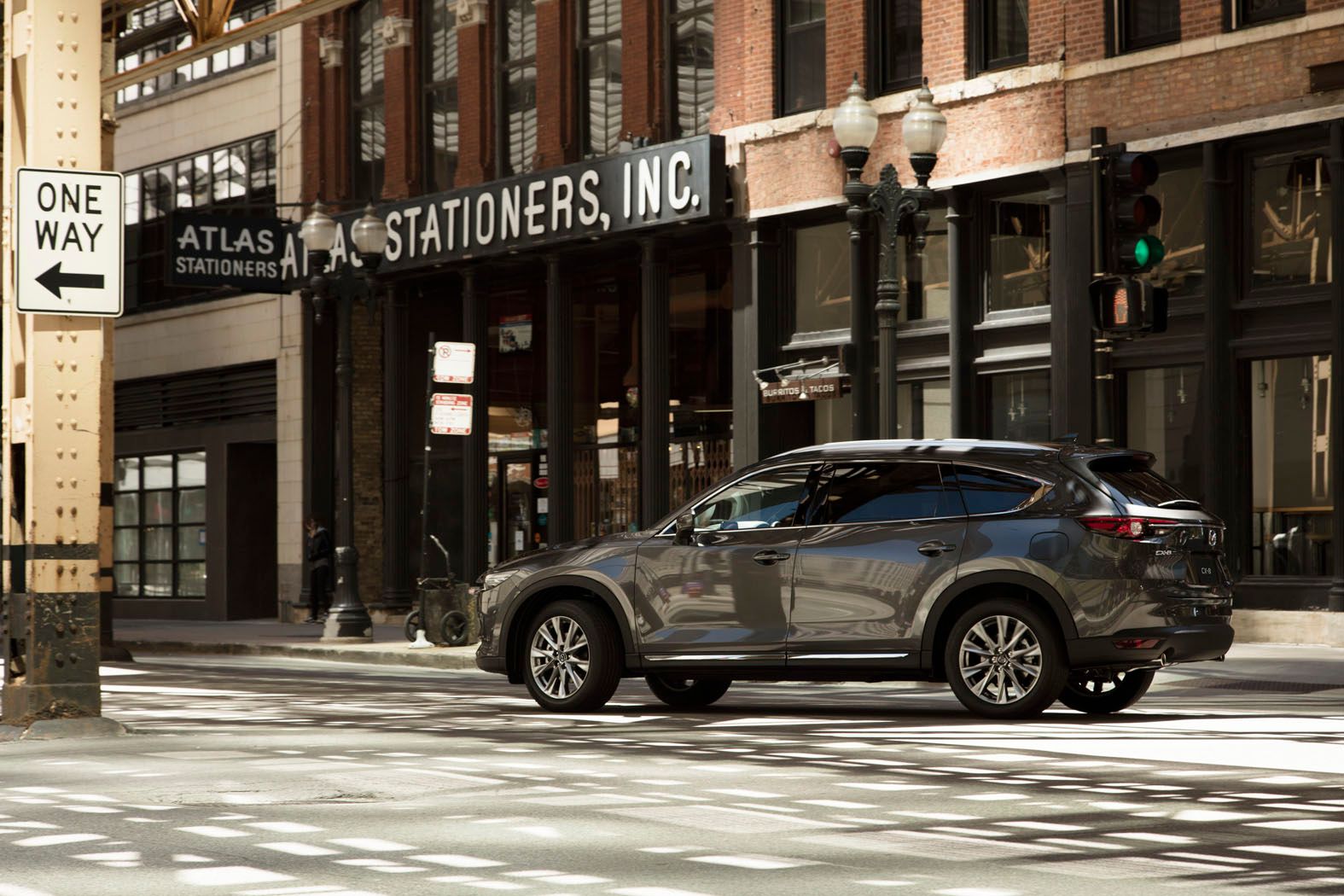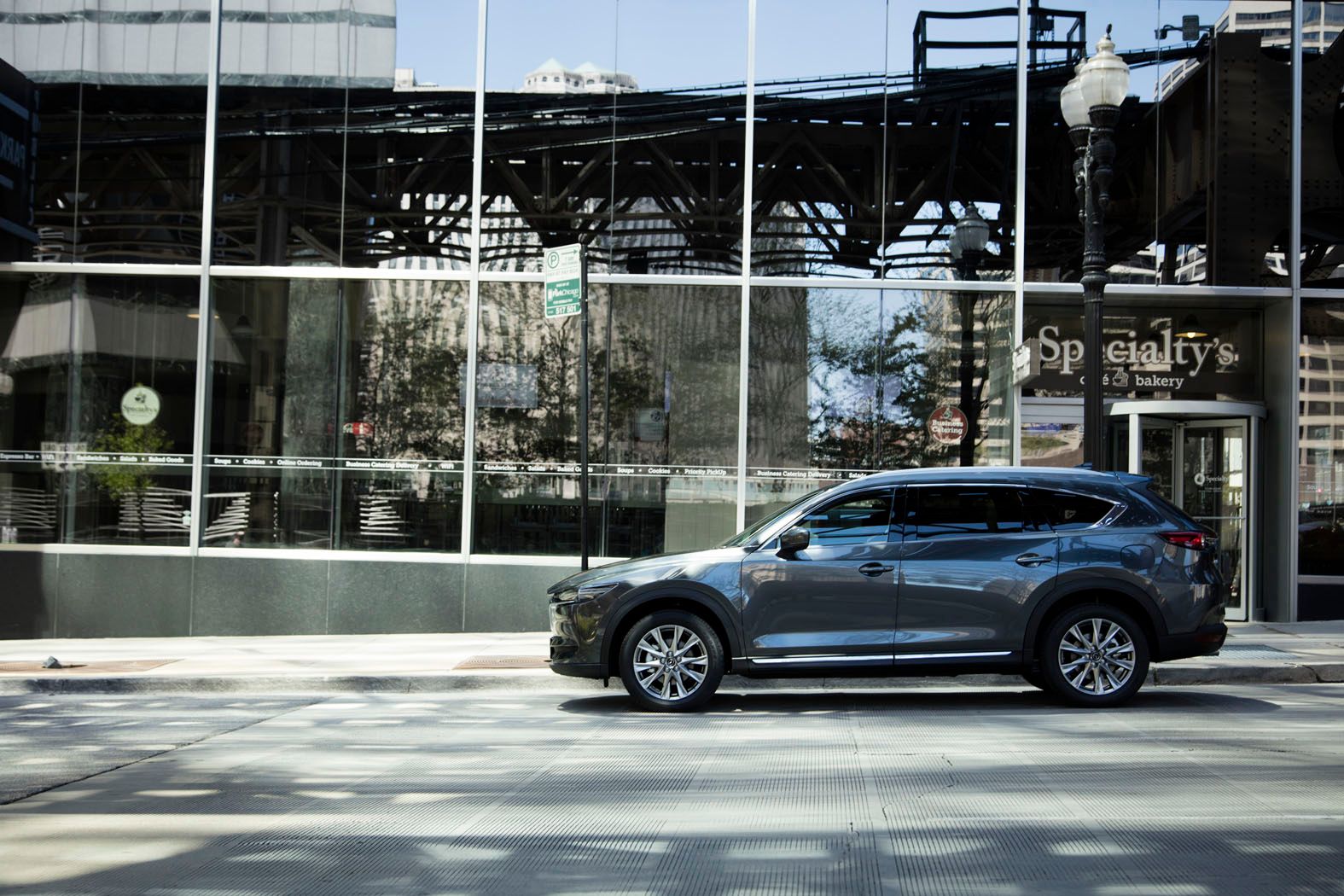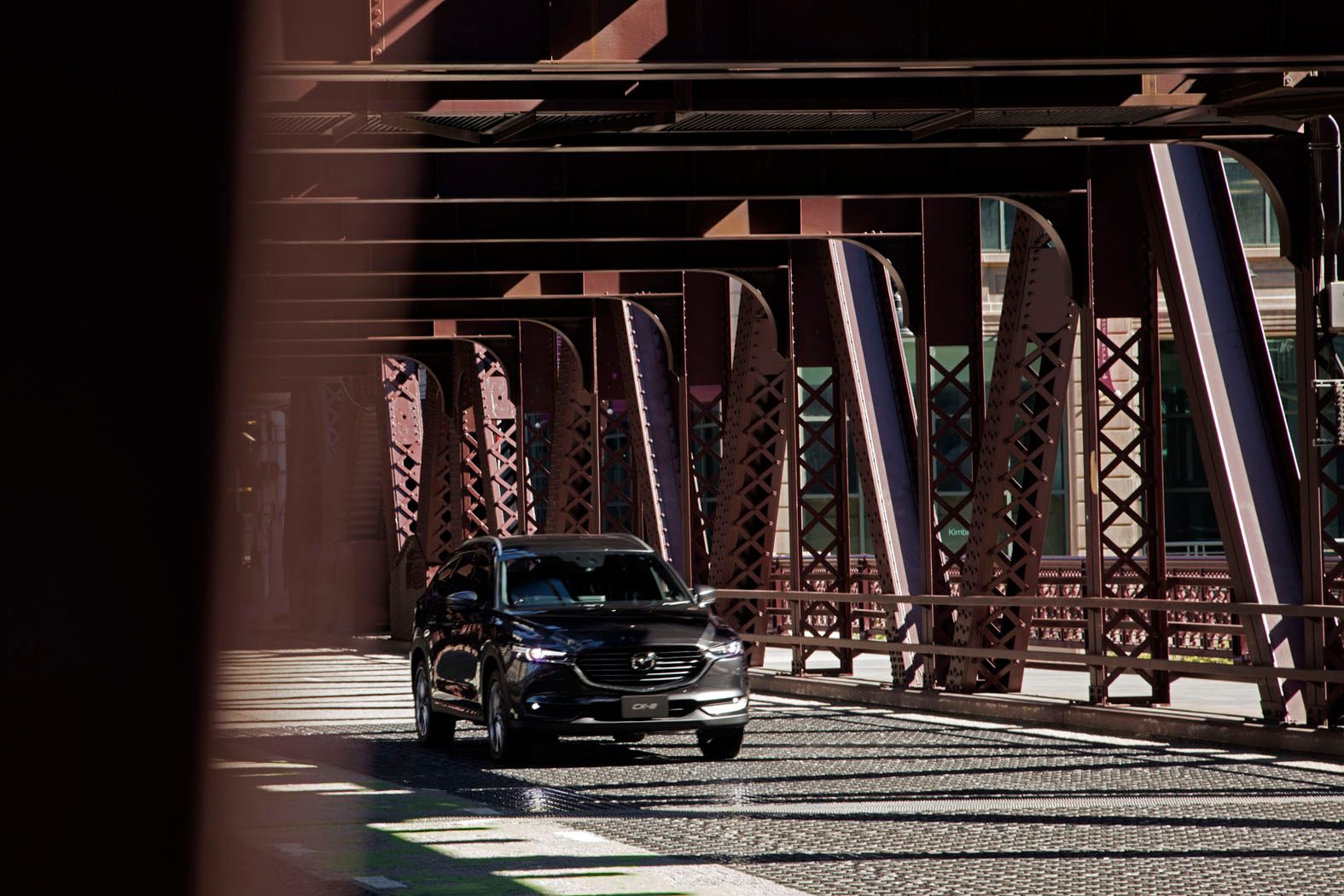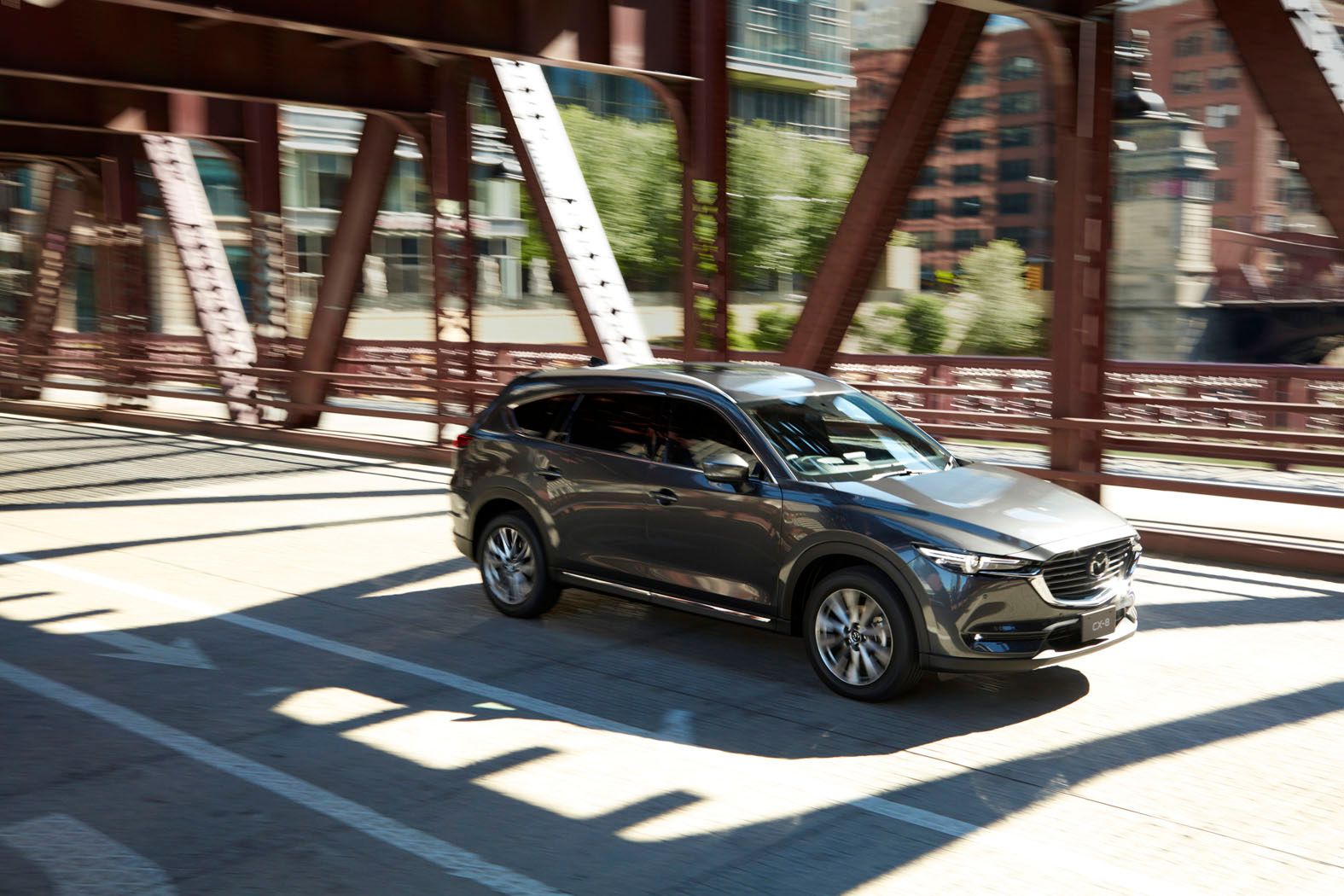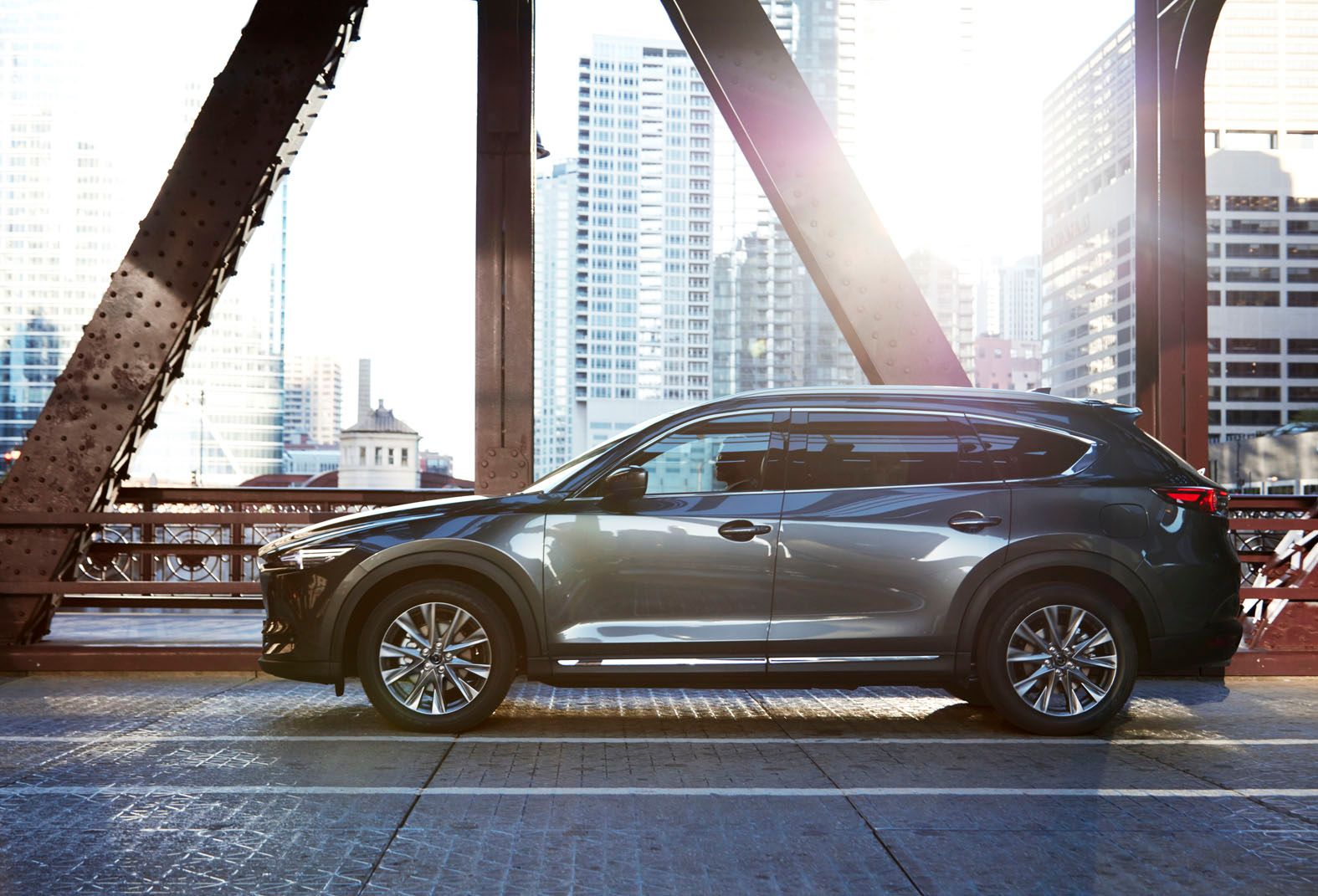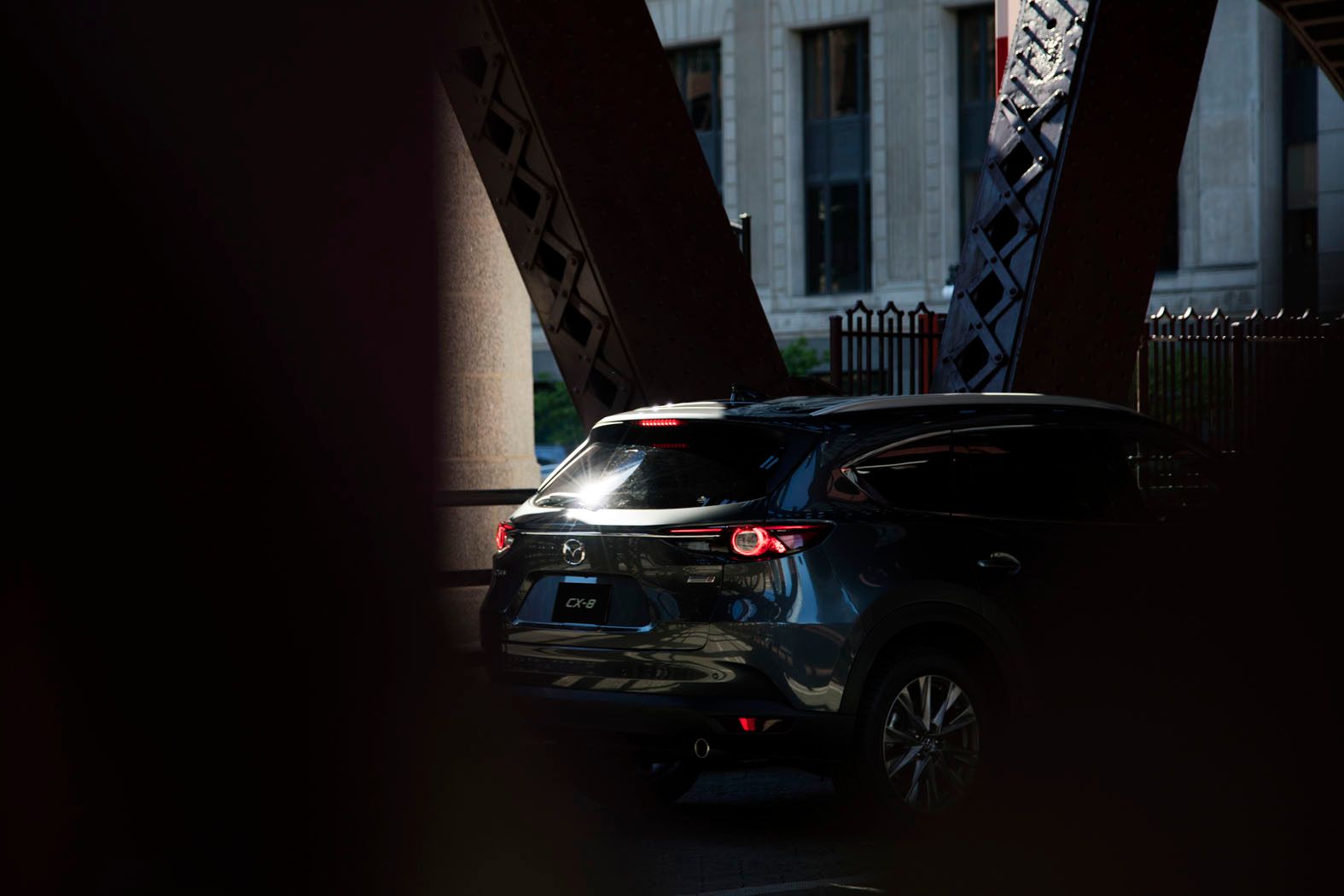In a world where SUVs have pretty much taken over the automotive market, Mazda is actually coming up quite short with its offerings, thanks to its current lineup featuring no more than the CX-3, CX-5, and CX-9. Over in Japan, Mazda’s home market, the offerings are even smaller with just the CX-3 and CX-5 making up the only options available to drive in SUV segment. Well, that latter fact is about to change, as Mazda has now introduced the Mazda CX-8. Essentially a slightly smaller CX-9 (we’re talking about inches here, folks) the CX-8 is designed specifically for the Japanese market, giving it something special from the brand that it helped produce so long ago. It takes on the same styling DNA as it’s taller, foreign sibling, while the power to go is derived from the 2.2-liter Diesel that Mazda has been using since 2012, but upgraded to deliver 140 kW or 187.74 horsepower or about 11 horsepower more than pre-2017 models.
Now, the CX-8 is being billed as an SUV that brings new style and depth to the KODO design language, with new “one of a kind” SUV styling. Well, go ahead and take a deep breath and sit down, because you just been taken for a long, hard ride. Mazda is about as bad as the German three when it comes to tooting its own horn, and the CX-8 is the proof. For the most part, the CX-8 is identical to the CX-9 that we have here in the states. The only real difference is the car’s size, which combines a drop in length of 6.49 inches with a drop in width of 4.76 inches, and a drop in height of just 0.89 inches. But, maybe it isn’t all the same as the CX-9 that you can find here in the States, so let’s take a better look at it to see what all Mazda is working with. Either way, it’s certain to be a plus for the Japanese market – those folks have been needed something larger than that CX-5 for a long time.
Continue reading to learn more about the 2018 Mazda CX-8.
2018 Mazda CX-8
- Make: Array
- Model: 2018 Mazda CX-8
- Engine/Motor: inline-4
- Horsepower: 250
- Transmission: six-speed manual
- [do not use] Vehicle Model: Array
Exterior
I would be lying to you if I told you that the CX-8 was all-new. In fact, I wouldn’t even blame you if you saw it and thought that it was a CX-9, to be honest. After all, it features a very similar front fascia, similar headlights, and identical grille, nearly the same hood, and –for the most part – the same body. The only real differences outside come in the form of slightly larger wheel arches. New body lines just below the waistline that fade off into the body in the center. The trim around the stationary glass in the rear quarter now comes to a point a bit higher here for a sportier appearance. Around back, there’s also a slightly smaller overhang that adds a bit of freshness to the lineup too.
Now, Mazda really did build this thing for the Japanese market, so it should be surprising that despite its appearance, it’s actually just a hair smaller than the CX-9 How much smaller, you ask? Well, the CX-8 comes in at 192.91-inches long, 72.44-inches tall, and 68.11- inches high. All told, that’s not much smaller. We’re talking about a difference in length of just 6.49-inches, width just 4.76 inches, and height being just 0.89-inches shorter. When you add in the fact that it also sports the same headlights, taillights, lower body structure, suspension and all, it’s pretty wild that this thing even exists. It almost seems like it would have been cost-effective to simply import the CX-9 to Japan. Mazda says the look is both timeless and edgy, but what do you think? Let’s move onto the interior.
Interior
While the exterior is very similar to that of the CX-9, the inside does get its own look with only a few similarities to remind you of how similar the car is as a whole. Naturally, the CX-8 was designed for the Japanese market, so it should come as no surprise that the driver’s position is on the right side. As far as the dash is concerned, there’s a bit of a similarity to that of the CX-9, but in this case, the upper level of the dash is a big bubbly insert that also makes up the overhang above the instrument cluster. All four vents are located on the front of the dash, pointing to one another with the inner edge coming to a point in the center. Ahead of the driver sits a three-gauge instrument cluster that includes a central speedometer left-positioned tachometer, and a digital unit to the right to offer up some driver information as needed.
The steering wheel is your typical two-spoke unit with a silver lower spoke and a handful of thumb button on either side spoke. The center console is quite similar to the CX-9 with the square look to it. The shifter is centralized and placed closer to the dash than most of us are used to while the rotary controller and a few control buttons are positioned to the rear ahead of the cup holders. The door trim panels are pretty standard, featuring armrests that run parallel to the ground below, and silver handles that match the trim on the dash, around the vents, and around the center console unit.
As far as materials go, the CX-8 will be offered in four different trim levels. Two of those get Nappa leather upholstery and real wood trim. The other two will get some cheap plastic trim and fabric upholstery. The CD L package, for instance, also brings in a bit of contrast with the upper section of the dash taking on a black coloration while the lower portion of the dash matches the seats. The interior layout is always available with three rows of seating, but what kind of seating is up to you. You can go with captain’s chairs in the second row that will allow the CX-8 to offer up seating for six, with a bit of a luxury, have-your-own-bubble kind of feel for the front two rows. Meanwhile, you can also opt for bench seating in the second row that will prove room for three passengers there, bring the grand total of people that can be hauled up to seven.
As far as cargo room goes, you can haul up to 239 liters of cargo with the third row of seats in place. Fold down the rear seats, and the amount of space increases to 572 liters with an extra 307 millimeters of storage in the subtrunk down below. Mazda has gone so far as to add soundproofing to the headliner and the D-pillar to cut back on even more road noise (those of you who have driven a CX-9 know why this was important.)
Drivetrain
You would think that since the CX-8 is so similar to the CX-9 that it would feature the same 2.5-liter, 250-horsepower, four-cylinder. But, instead, this Japanese-primed vehicle gets a 2.2-liter diesel – the same one that has been used in Mazda vehicles since 2011. And, be that as it may, the engine has seen a mild upgrade that moves it up from 129 kilowatts up to 140 kilowatts. For those of you on this side of the big drink, that’s a total of 187 horsepower, up from 172 horsepower and 310 pound-feet of torque. A six-speed automatic transmission handles shifting duties while front-wheel or all-wheel drive can be had on any trim level. G-Vectoring control is also standard on all trim levels. The chassis and body are supported by the same suspension system as the CX-9 but tuned specifically to handle the size and weight of the CX-8. 17-inch ventilated discs hand braking up front while a solid system is mounted in the rear.
Pricing
The CX-8 is set to go on sale on December 14th, and the order books are already open. Pricing starts out at 3,196,800 for the entry-level model and increases marginally up to as much as 4,190,400 for the range-topping model. This pricing includes taxes, according to Mazda, but doesn’t include options or accessories. For those of us here in the U.S., those prices convert to 28,641.83 and 37,544.01, respectively. To put that into perspective, the CX-9 starts out here in the U.S. at $31,520 and climbs to as much as $44,315 for the range-topping Signature model. As it turns out, Mazda is giving the Japanese market quite a deal on its new full-sized SUV.
Competition
.
Peugeot 3008
One of the biggest competitors on the Japanese market for the CX-8 will be the new Peugeot 3008 SUV. It replaces the old MPV 3008 that was uglier than sin with something much more sporty and ready to take on the new world of SUVs. Under the hood, Japanese models get a 1.6-liter four-cylinder as standard equipment. It delivers 159 horsepower at 6,000 rpm and 177 pound-feet of torque between 1,400 and 3,500 rpm. The 3008 will be a bit shorter at 4,450 mm (compared to the CX-8s expected length of 4.900 mm), but it’s classy enough to be relevant. Pricing for the 3008 SUV starts out at ¥3,540,000 or about $31,304 at current exchange rates.
Learn more about the Peugeot 3008 here.
Conclusion
To me, I think it would have been better if Mazda had just manned up and dropped the CX-9 into the Japanese lineup. It would have saved time, and it would have certainly fit. I mean, the CX-8 does make sense as the largest SUV offering from the brand right now is the CX-5. But, the brand could have made it much easier on itself. After all, we’re talking about a total size difference of no more than 12 inches between height, width, and length. That doesn’t make the CX-8 much smaller. And, with that said, I think Mazda knows better than to try to pawn this thing off on the U.S. market. First of all, it just wouldn’t make sense with the exception that it’s a bit cheaper than the CX-9. Of course, that would only hurt CX-9 sales, so it would only make sense from a consumer standpoint. I have a feeling that the CX-8 is going to stay in the Japanese market for some time to come, and that’s where it should be. After all, the Japanese needed a full-sized Mazda SUV too, right?
So, in the end, what do you guys think about the Mazda CX-8? Let us know in the comments section below.


